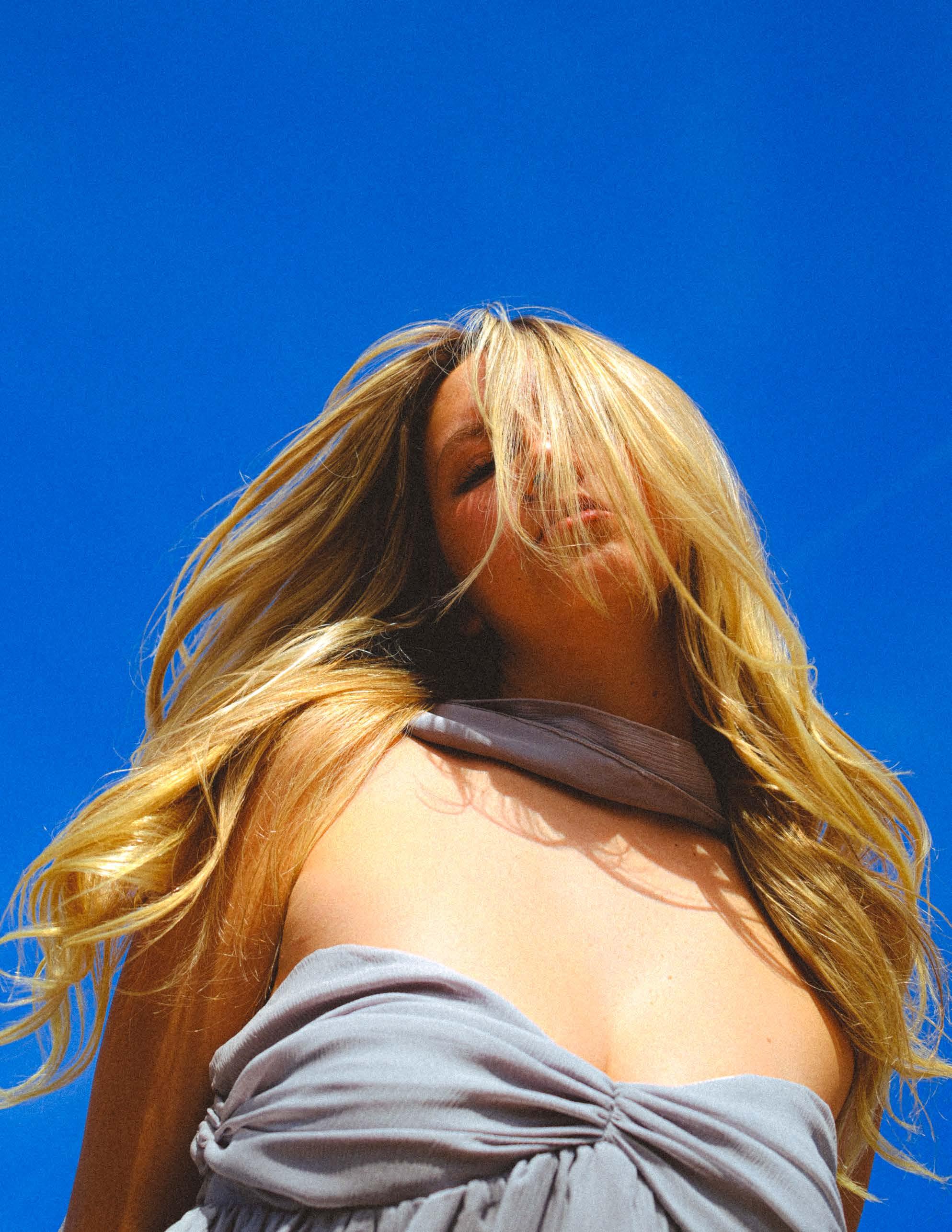
The Sun, The Moon, & The Stars






The Sun, The Moon, & The Stars





Tasha Karam




As a graduating senior, I have become much more conscious of time and its passing. There are the days that feel endless and easy, days we dread and resent. There are the days we wish for more of, and the days we pray to end. These days, both the good and bad, are followed by nights. Nights blurred by hazes of smoke and crowds of beautiful people. Nights wasted and disposed of so easily by laziness and anxiety-induced comas.
These days blur into weeks. Weeks into months. Months into years. It’s as if “time is the fire in which we burn,” - Delmore Schwartz.
This issue was born as I reflected on the past four years. The more I thought about self-growth, friendships, and love, the more I found myself associating memories and values with time. I thought about the sun, the moon, and the stars, and their role as indicators of time and its passing. We wanted to explore how these celestial bodies are transformative in defining our emotions, what we feel, and how our feelings are shaped through time.
The sun; a representation of life, love, warmth, and balance. Its rays and light are signifiers of the energy and sustenance that allows life to grow and thrive on Earth. Just as the sun illuminates our physical world, it also epitomizes the illumination of the mind and our intuitive insights.
The moon; a symbol of femininity, associated with intuition and emotional depth. Its continuous cycles and transformations serve to represent the phases of life — some waning, some full, some new. As a partner to the sun, the moon is symbolic of the balance between light and dark and the conscious and subconscious.
The stars; symbols of inspiration, optimism, dreams, and guidance. Often held as beacons of light in darkness, to many, the stars are the celestial beings connecting us with the heavens. They are also associated with the explorative realms of navigation, spirituality, and accomplishment.
This issue is an ode to the shooting stars we wished on as kids. The days we have spent smothered in sunlight or building forts under moonlit skies. Not merely a collection of writing and photos, these pages pay homage to our memories; beach days marked by freckles on our sunkissed faces, and the kisses we’ve shared under full moons.
We hope you resonate with even just a piece or page of the issue, whether it’s about nostalgia, reconnecting with nature, tainted love, dreams, or existentialism. These pages are a reflection of us and growing up. As two young women, we are eternally grateful and honored to have been given the opportunity to lead the creation process of this magazine. Thank you to our team and every person who was involved in the making of Strike LA Issue 02.
Strike Out, Tasha & Ella
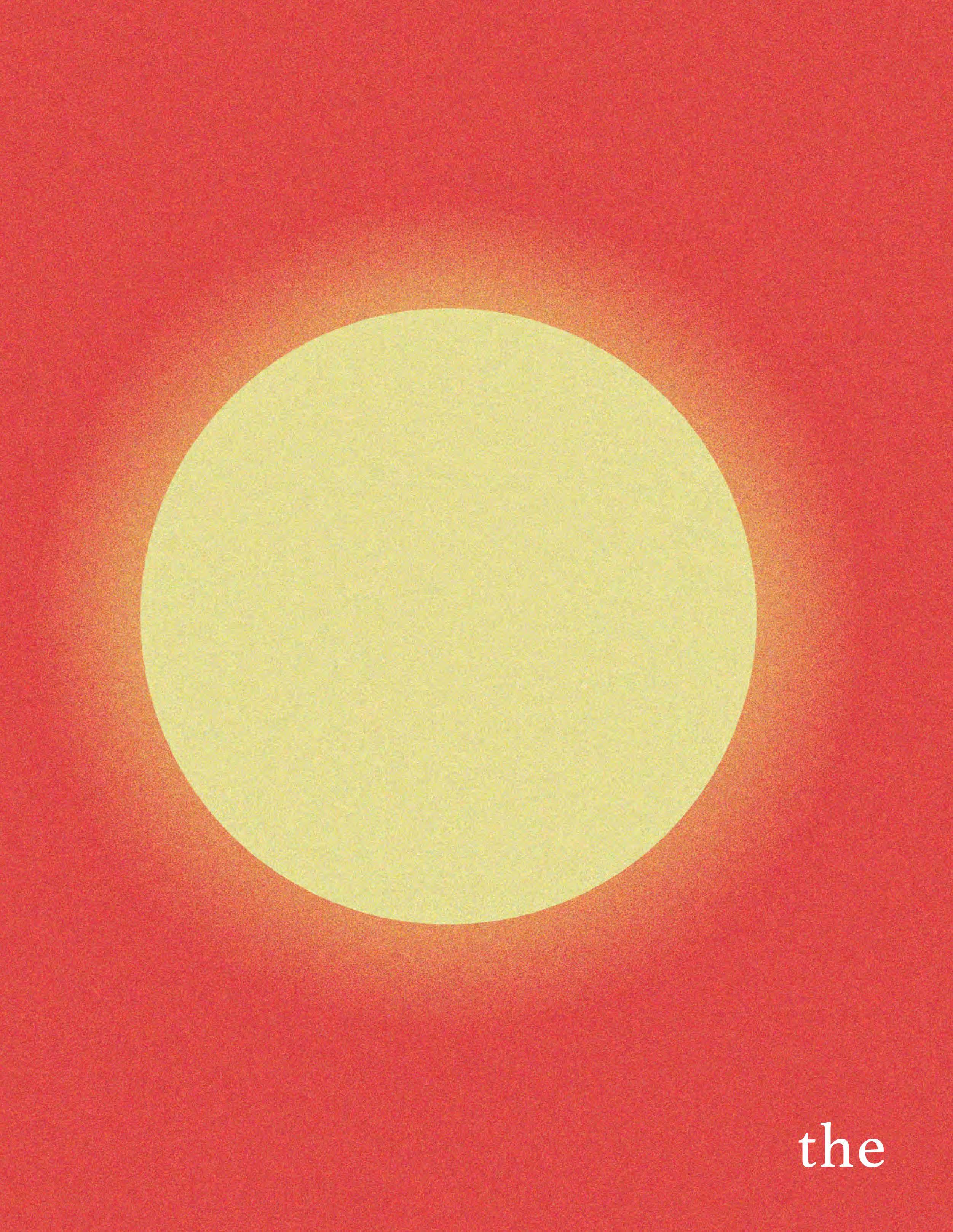
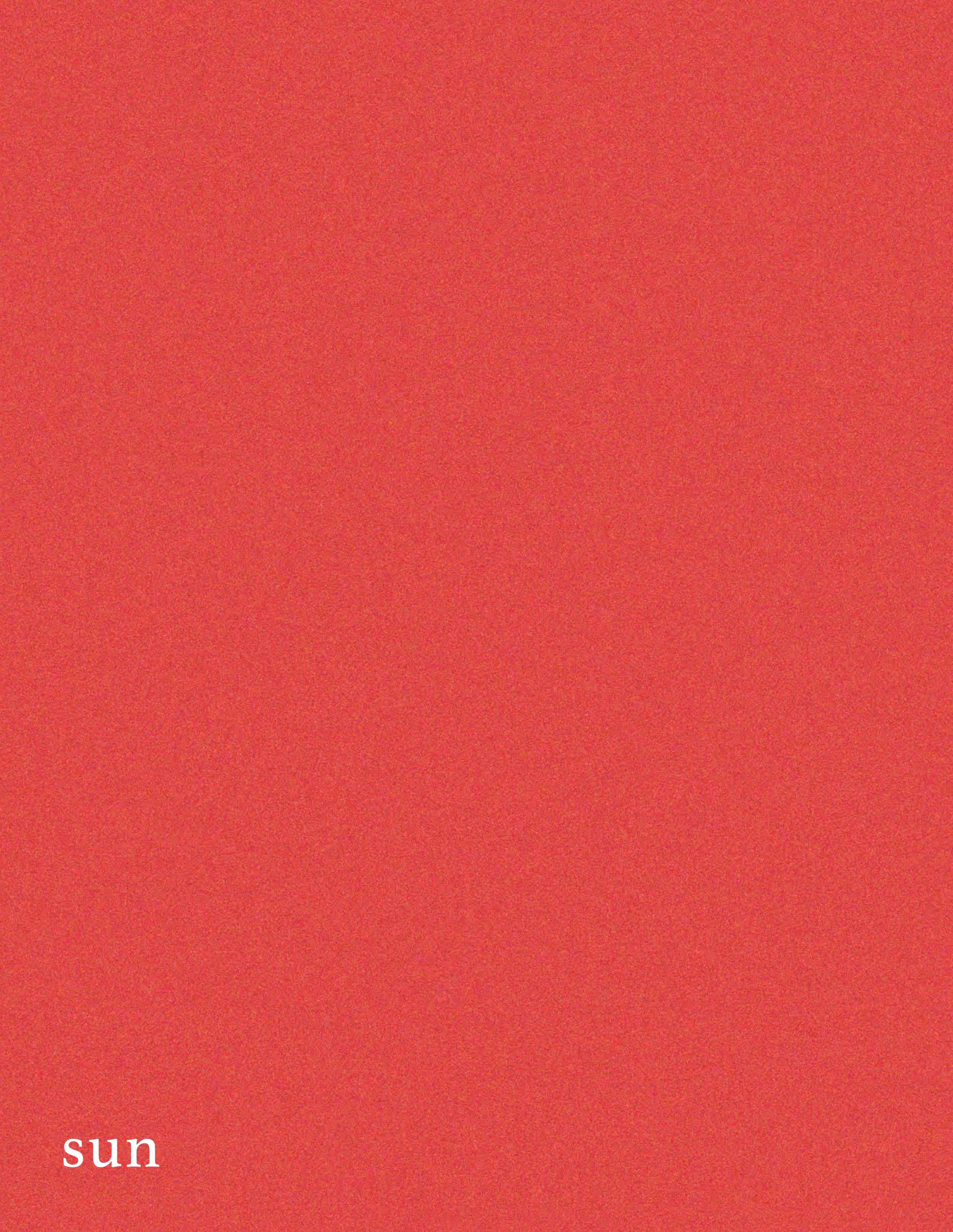
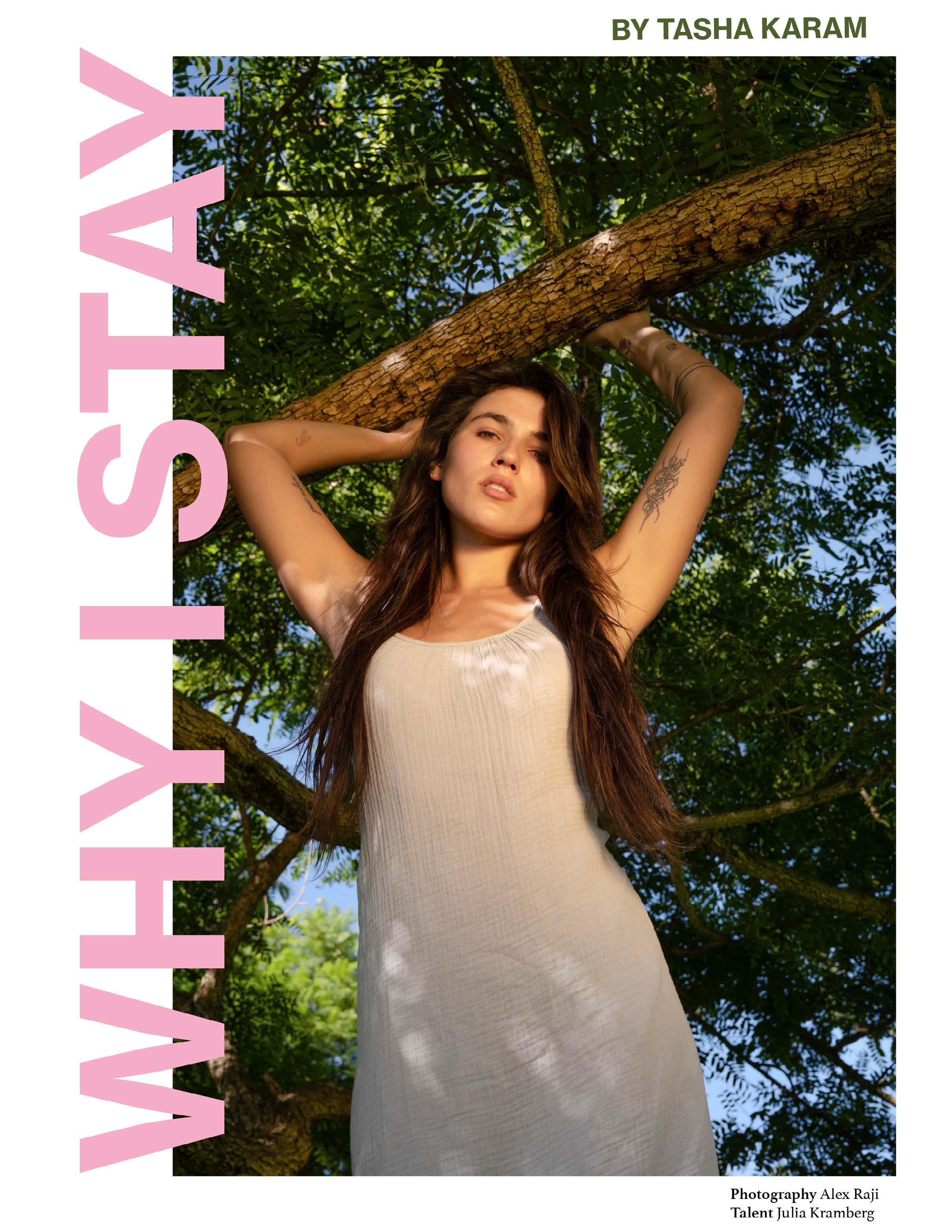


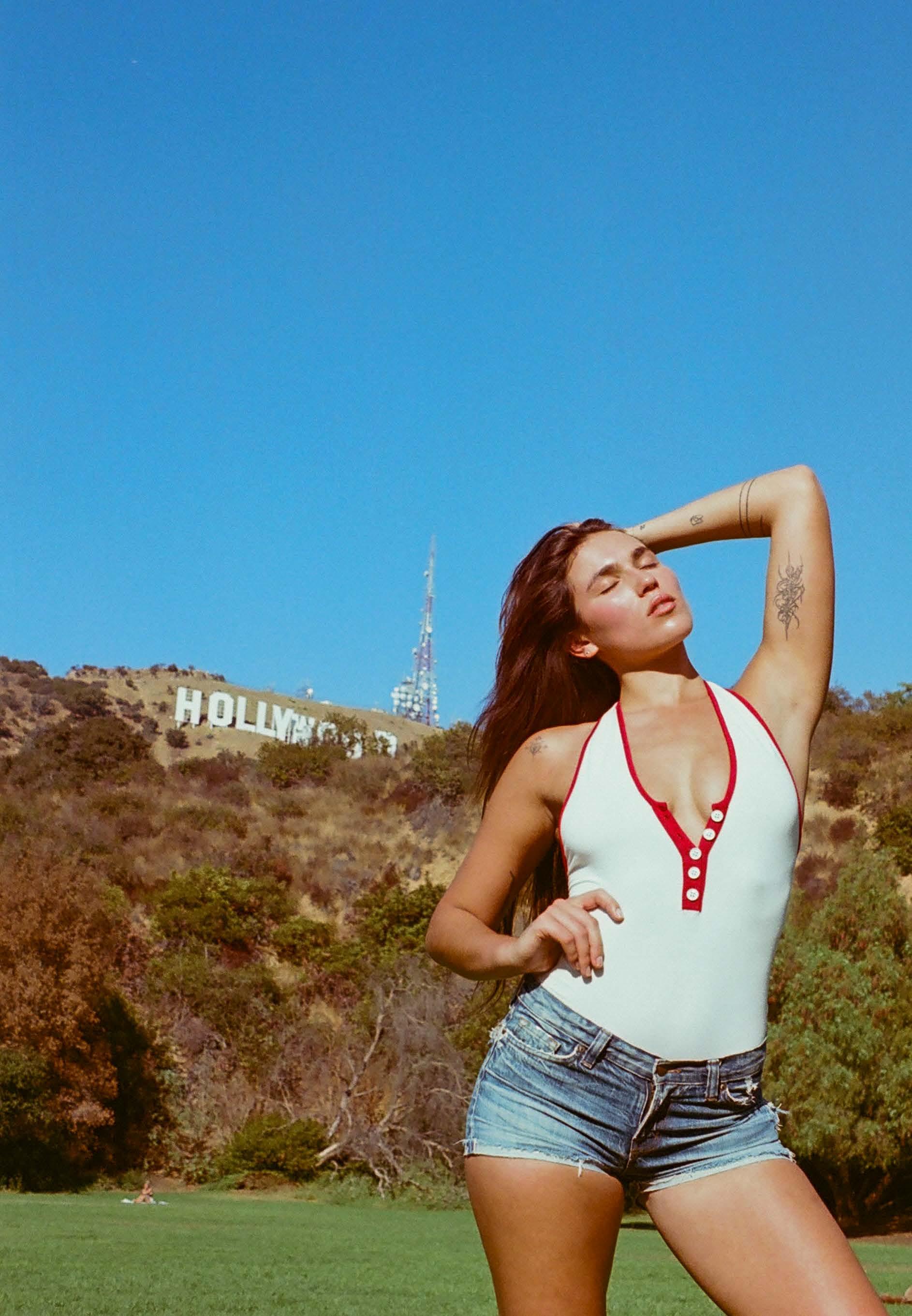
Photography
Ella
Styling
Grace
Talent
Julia
Assist
Sofia
By Ellie Grills
Also known as the “City of Stars,” Los Angeles is a creative hub where dreamers come to pursue careers and make names for themselves.
It's a city symbolic of art, culture, ambition, and new beginnings. From witnessing the behind-the-scenes magic of how student films are made to dancing in my first heels class at Playground LA, the opportunities here are endless. This intoxicating creative energy is what initially drew me to LA, but amidst the constant hustle and race to success, it's easy to feel overwhelmed and disconnected from what truly nourishes the soul.
These symptoms, which are common in fast-paced, urban environments, can be regulated by grounding ourselves in nature.
Grounding is an ancient practice that aligns our bioelectrical systems with the Earth’s through direct skin contact, often by walking or standing barefoot on grass. The natural frequency of the Earth helps balance our blood pressure and hormones, reduce stress, and regulate the nervous system.

If you’re still wiped out, go lay in the Sun for an hour. Your mind, body, and spirit will begin to recharge from the nourishment it provides. After all, the Sun is the source of all life on Earth.
Luckily, beyond the city lies an abundance of nature escapes, such as hiking trails, waterfalls, parks, and beaches, where the outdoors becomes a powerful source of healing and reconnection. Time spent in nature grounds our energy, soothes anxiety, and boosts feelings of happiness. Just looking at the color green lowers cortisol levels! Its connection to life and nature evokes a sense of safety, and because green sits in the middle of the visible light spectrum, it is easy on the eyes and calming to the mind.
Burnout, writer’s block, low self-esteem, endless doom-scrolling, and emotional sensitivity are all indicators of a dysregulated nervous system.
When sunlight hits the skin, it stimulates the production of Vitamin D, a nutrient vital for bone health, immune function, and overall well-being. Vitamin D aids calcium absorption which strengthens bones and reduces the risk of heart disease, diabetes, and some cancers (2008). Natural sunlight also boosts serotonin levels, improving mood, focus, and sleep quality by balancing melatonin production at night. Simply allowing our bodies to absorb a mere 10 minutes of direct natural sunlight has the potential to alleviate negative symptoms of depression.


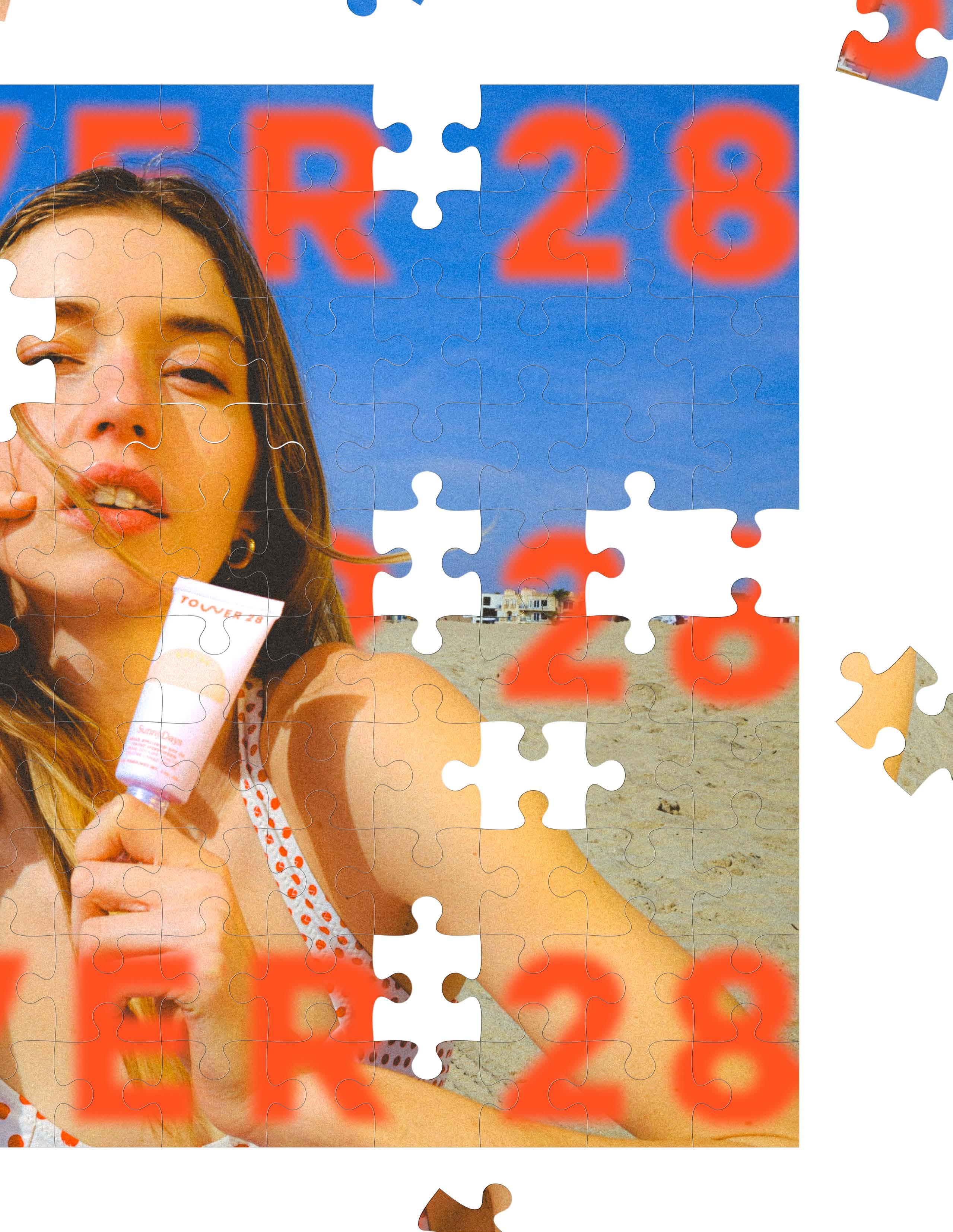
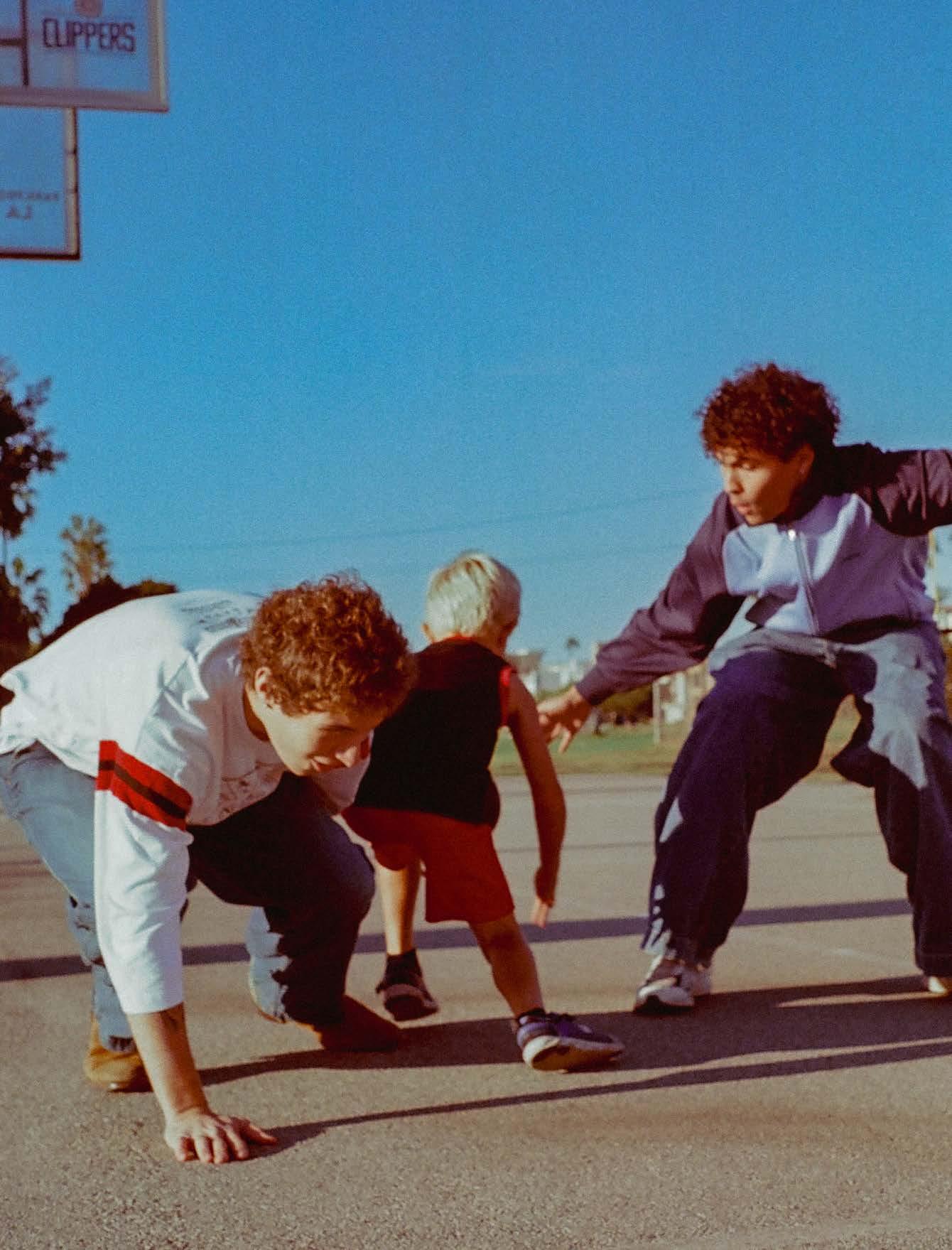
by Max Cohen
I was eighteen, and the world felt wild, endless, or at least it did from my studio— a room with a bed, a desk, and a window framing a view rougher than you’d imagine. The sun slashed through the morning fog, its light slicing across the floorboards, sharp as a blade. Golden and fierce, it claimed everything, turning clutter into something almost holy, the ordinary into a whisper of the Divine. I thought it meant I had time, that I could linger here forever, that the world could wait.
Sometimes, I’d look around and feel like a kid again, remembering when the days stretched wide and sweet. Back then, it was candy I craved, the simple stickiness of sugar, bright and boundless. But now, cravings were harder, sharper— something that lingered on the tongue and stayed with you like smoke. I’d reach for things I couldn’t quite hold— a body, a bottle, a feeling that vanished just as quickly as it came.
Weekends used to be simpler, softer, a cycle of playgrounds, scraped knees, nights spent tangled in sheets and starlight, believing morning was a lifetime away. Now, weekends blurred into each other— a haze of smoke and sweat, a tangle of limbs, mouths split open in laughter, wine bottles popping, spilling like promises. We’d fill the room, a mass of limbs and noise, a chorus that never seemed too quiet, lips moving faster than time, as if we could outrun the dawn. Those nights felt like a spell, the way we moved, the way we spoke, as if the dark gave us permission to be raw, to be reckless, to be everything we feared admitting in the light.
Love used to feel like something easy, like second nature, but now it had edges, lines we couldn’t cross. She was there, too— a little older, a little wiser, with a gaze that dared you to look away. Red lipstick smudged, hair wild, curling up beside me like she belonged.
We’d pass a bottle, back and forth, each sip daring the night to stretch longer. She’d laugh at my poems, a low, throaty sound, as if coaxing a secret from my chest. She’d read them aloud, slow, deliberate, making my words hers, etching them into the air. And I’d let her, because it felt good, because it felt like being seen. We’d stay up until the sky blushed, her head on my shoulder, whispering things that felt like confessions, that vanished with the first light of day.
Some nights, we’d wander to the fjord, the water black and biting, skipping stones until our fingers numbed. She’d hold my hand, tight, daring the wind to carry us away, and we’d kiss under a sky that stretched like a promise. We didn’t need to define it— we blurred the lines, entangled in ways that ached and healed at once. She’d talk about all she wanted, the places she’d go, and I’d promise to follow, knowing we were lying, A lie so beautiful it almost felt true.
It was like that— chaotic, intoxicating, untamable. We were sparks striking steel, bright, fierce, gone too fast. I loved how we collided, how we crashed, as if we could shatter and still be whole. But the sun was always there, waiting to remind us the night was a thief, stealing time, leaving us hollow. It would pry us apart, dragging us up for air, gasping, half-awake, a little more sober, and I’d wonder if this was freedom— not the fall, but the release.
There were others, too— friends who felt like lovers, lovers who felt like strangers, voices and faces drifting in and out, each leaving a bruise, a line of poetry, a ghost of a kiss.
We’d sit in circles, legs tangled, bodies close, books open, the floor littered with bottles, reading our truths aloud, daring each other to listen. For a moment, we were honest, for a moment, we were free.
I’d remember lying under the stars as a kid, believing in infinite futures, that nothing was beyond reach. Those were the days I was learning to be alone, even when I wasn’t, finding myself in the cracks between words, in the spaces between sighs, in the quiet that fell when the music stopped, and all that was left was the slow, steady thud of my own heart. The sun would rise, stretching its light over our wreckage, merciless, unapologetic, daring us to see everything under its glare, to look and not turn away. And I’d think, maybe this is what freedom is— not clean, not safe, but raw, and sharp, and real.
Now, when the light catches just right, I see that boy again, a flicker of who I was, chasing things he couldn’t hold, dancing with shadows, unafraid of the light. And I’m still learning, how to be, how to write, how to love, how to let the sun see every wild, imperfect part of me, and still find something worth holding onto.
Because that’s what the sun is— a voyeur, a witness, a reminder that no matter how dark the night, no matter how far the shadows stretch, it will find us, pull us back, and we’ll be seen, raw and unfiltered. And maybe that’s the point. To be laid bare, to be alive, to let the sun burn away what doesn’t matter, and start over, again, and again, and again.




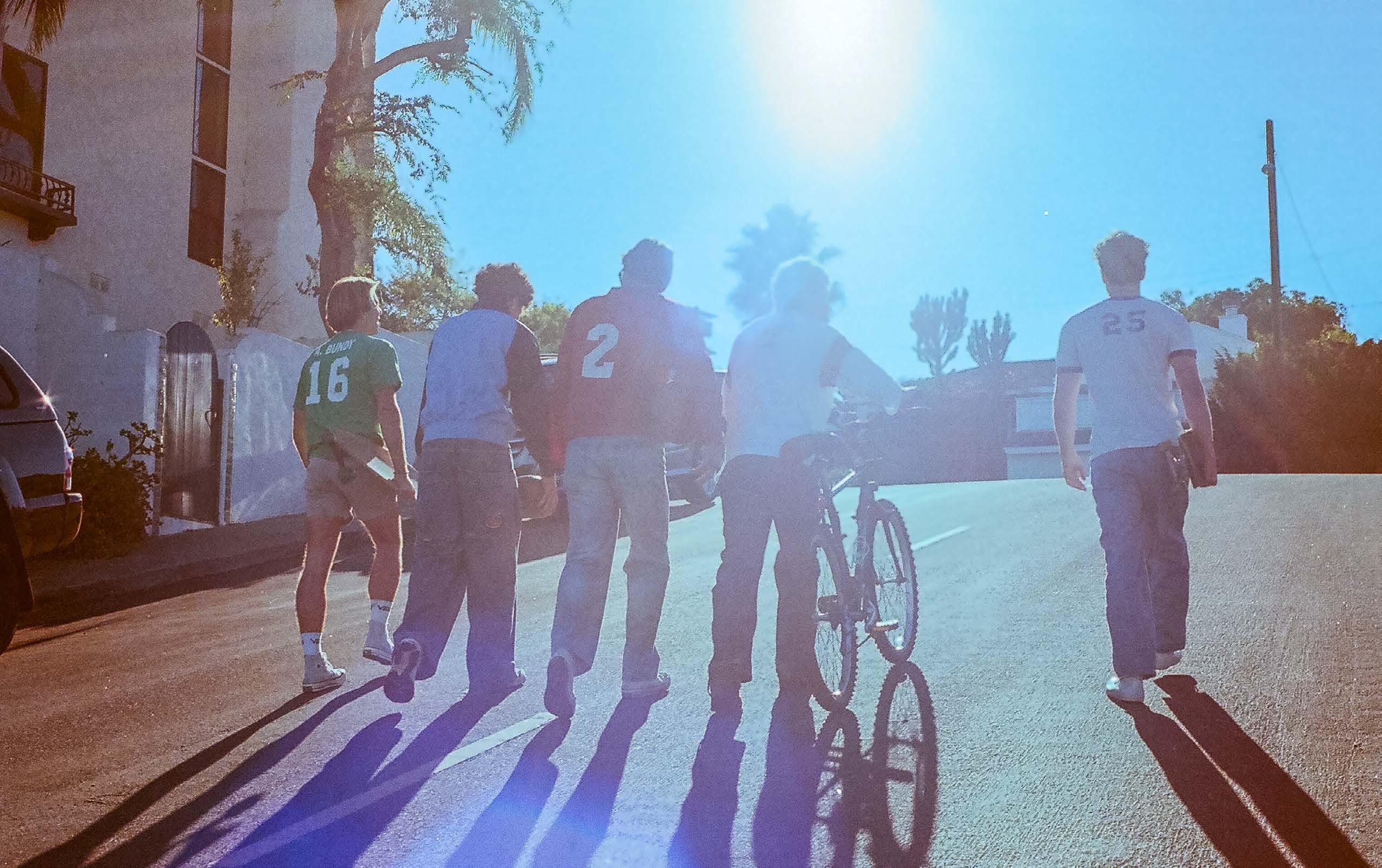








Come out, everyone, come out, The sun is going down. The sky is set ablaze In a sea of melted gold, As the brightest star goes down in setting grace— The one which illuminated the new world and the old. The giant is preparing for eternal sleep. Gather, children, gather family and friends; It’s the sun’s last light, it’s the sun’s last dance.
[Is this how it all ends?]
Shine bright, shine away, Kiss me goodbye with your golden rays, And promise me that you’ll be okay. As the warmth fades from your faint glow, I hear you screaming, “I’m ready, I’m ready!” Little do you know How much I miss you already.
[I don’t want you to go.]
Stay a little longer, please stay. I know you’re tired, But there is still so much to say. At least hold on to twilight for as long as you can— Maybe you’ll be able to catch
A glimpse of the stars that bow to your descent, The stars covered in their sapphire mantle to mourn your silent death. I wonder while their glittery tears stain the sky, How I never said I love you; I’m not sure why.
[I guess time is over.]
Goodbye, goodbye. Please wait for me on the other side. But until that day arrives, I’ll look up at the skies, To where the moon reflects your light, And know that even in the darkest of nights, You will always be my guide.
[Until dawn, my dear, until the next life.]
by Julia Vilardi


There’s a sanctity in silence, Where shadows twist like smoke, And the night swallows whole.
I left my 3rd and 4th eye with Icarus— Now I walk blind, unraveling. Each step, a whispered prayer That the moon might bend, might break, might bleed.
Don’t confuse me with who I am—
I am the future echo of a name, Already slipping through the cracks of your memory.
Shut my eyes—
Let the darkness cloak me whole.
Tell me you love the weight I carry, Not the hollows where I’ve disappeared. Don’t confuse me with who I am—
A fleeting shadow in your flame, Ash drifting on the wind of your desire.
I split the needle’s spine, Threaded grief with shaking hands. God, with empty eyes, Watched as I stitched myself into you—
A wound bound to reopen.
I thank Him for the stillness, the void, For the way this skin no longer fits.
Don’t confuse me with who I am—
I am the dull edge of a blade, Blunted by time, but still aching to cut.

The night tightens around me, And I reach for the moon—
A faint shimmer, a distant scream, Fading like a heartbeat drowned at sea. Don’t confuse me with who I am—
I am the echo of your silence, Drifting weightless beside stars That burned out long before we met.
Don’t confuse yourself with who I could be. Your body leans into mine,
And in this darkness, we lose ourselves to the quiet, Flesh tracing lines that words won’t touch. My lips find the curve of your neck,
A place where language unravels.
I followed the warmth of your skin, But felt nothing where it should’ve burned. Don’t confuse this with love, Don’t confuse me with who I am.
Don’t confuse yourself with who I could be.
My first kiss landed on your neck and with that a scar etched in the dark, And for a moment, we were whole—
A constellation erased from the sky. Now tell me the ways I made you better, But don’t tell me if I wasn’t your best. Shut my eyes, for tonight you’re my everything, But by morning, you’ll surely be less.
by Max Cohen
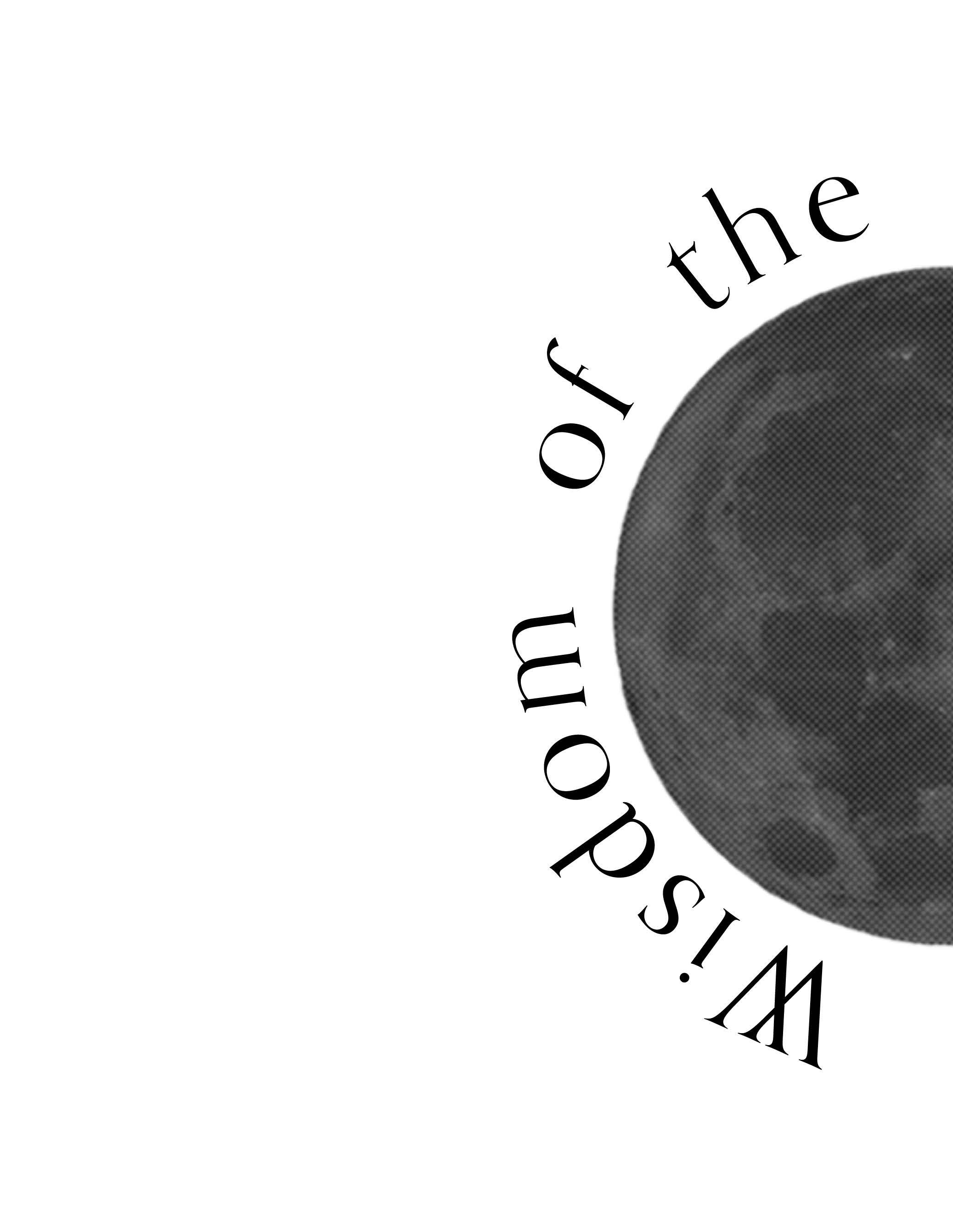
On a soft fall night, I stand in my front yard and admire its light. It’s 10:00 pm, and the Full Moon peaks at midnight.
I will be setting out my moon water and crystals soon. The powerful lunar energy during this time, now at its peak from the Sun's opposition, will cleanse my rose quartz and labradorite, amplifying their inherent properties of love and emotional healing.
As I reflect on the past month, I can’t help but feel a sense of grief – how I was thrown into the next season of my life before I had a chance to say goodbye to the last or how fast time passes without warning.
The Moon is a celestial body that has evoked curiosity and awe since the beginning of human history. Playing a powerful role in the course of life on Earth, the Moon controls the tides, the rains, the waters, the seasons, and even our circadian rhythms.
Central to many ancient rituals and tales around the world, the Moon’s spiritual significance reflects humanity’s shared quest for understanding and connection to nature. It has been interpreted as a god, a planet, a calendar, and was one of humankind’s first timepieces before written language.
The Moon universally represents the rhythm of time as it embodies the cyclical nature of life. Its phases – from new to full – symbolize transformation, growth, and change. Evolving over approximately 29.5 days, each phase carries a unique spiritual significance that we can use to move ourselves from times of darkness back toward light.
With no illumination from the Sun, the darkness of the New Moon is a fresh start – like fertile soil waiting for seeds to be planted. This is a gentle time to explore your desires and set intentions for the upcoming month.
A few days later, the Waxing Crescent phase follows and as the Sun begins to illuminate the Moon’s right side, a thin, silver crescent appears in the sky. This energizing time is perfect for forming new habits and taking tangible steps toward your goals.
The First Quarter, when the entire right side of the Moon is illuminated, is a time for making decisions and pushing past obstacles as momentum continues to build. Don’t forget the intentions you set during the New Moon.
Now, completely illuminated by the Sun, the Full Moon represents the peak of the lunar cycle – a time of high energy, clarity, and reflection. It is an opportunity to celebrate your accomplishments and reflect on what you learned. This is also a time for letting go, as the moonlight symbolically “illuminates” what might be holding you back, such as certain relationships or limiting beliefs that have reached their climax.

As the Moon wanes, the final stage of the lunar cycle is the Quarter Moon which represents completion, reflection, and a time to reorient yourself for the next cycle. Completion can look like finishing a project or acknowledging that a behavioral pattern is (or is not) beneficial to you.
When life feels heavy and I can’t see the light at the end of the tunnel, the Moon’s ever-evolving phases remind me that the pain cannot last forever. Just like the Moon, we must go through phases of emptiness to feel full again.
The Moon is also a symbol of the feminine as it represents darkness, mystery, and rebirth. Menstruators are reflections of the Moon – of its phases and natural rhythms, and just like the Moon, they go through their monthly cyclical phases.
While Indigenous cultures honor menstruation as a sacred time for introspection and connection with the cosmos, Western cultures often consider menstruation a burden, an illness, or an aspect of feminine nature best suppressed (i.e. PMS being identified with a woman’s ‘monthly madness’). The irritability that some experience during menstruation is often a sign they are not aligning with what their body needs – to withdraw from the outside world to focus on rest and introspection. This withdrawal, historically honored in other cultures, allows menstruators access to their inner wisdom. In Native American cultures, when women returned from their ‘moontime retreat,’ they brought back vital information such as when to move camp or where the buffalo were. These revelations guided the community’s plans, reflecting a deep respect for feminine intuition and knowledge. This integration of menstruation into society’s operation highlights its importance, contrasting with modern tendencies to dismiss it as incompatible with hegemonic ideals of productivity.
The menstrual taboo in the West leaves individuals feeling ashamed and disconnected from their cycles, closing many off from the magic of their bodies. Reclaiming the connection of menstruation to nature helps destigmatize social perceptions and allows menstruators access to their inherent wisdom and alchemical power.
By aligning with the lunar cycle, we can all – both those on a 24-hour and 28-day hormonal cycle – deepen our connection to ourselves and the cosmos, optimize our well-being, and embrace periods of rest and reflection to support whatever phase of life we are in.
As I finish journaling under the peaceful night sky, I decide that with this Full Moon, I will release all the fear and uncertainty that grips me when life changes. Next month will bring its own chaos, days heavy with grief, and moments that make me question everything. But it’s going to be okay. Not despite the darkness that I face, but because of it. It transforms the way I see in the light.
by Ellie Grills

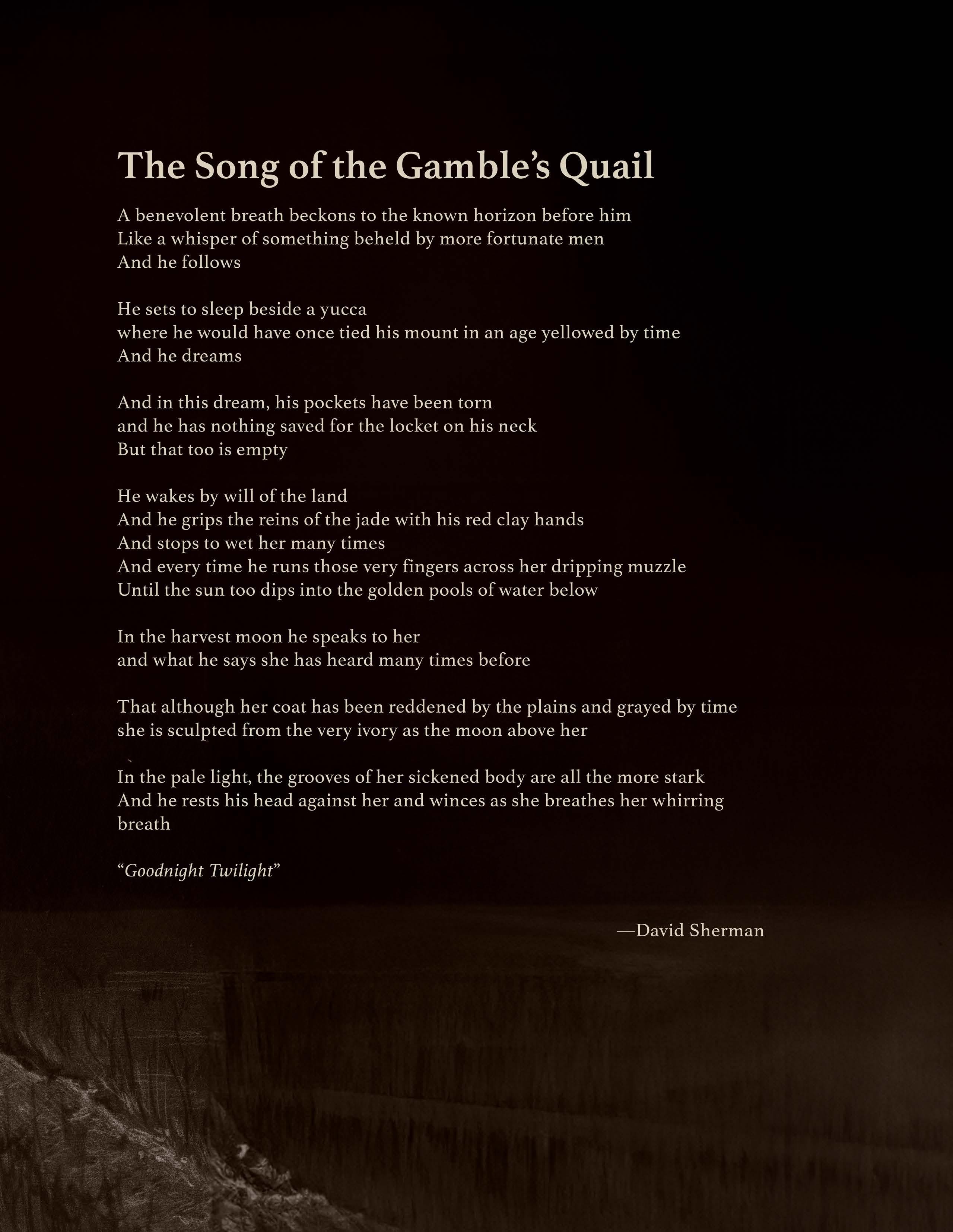

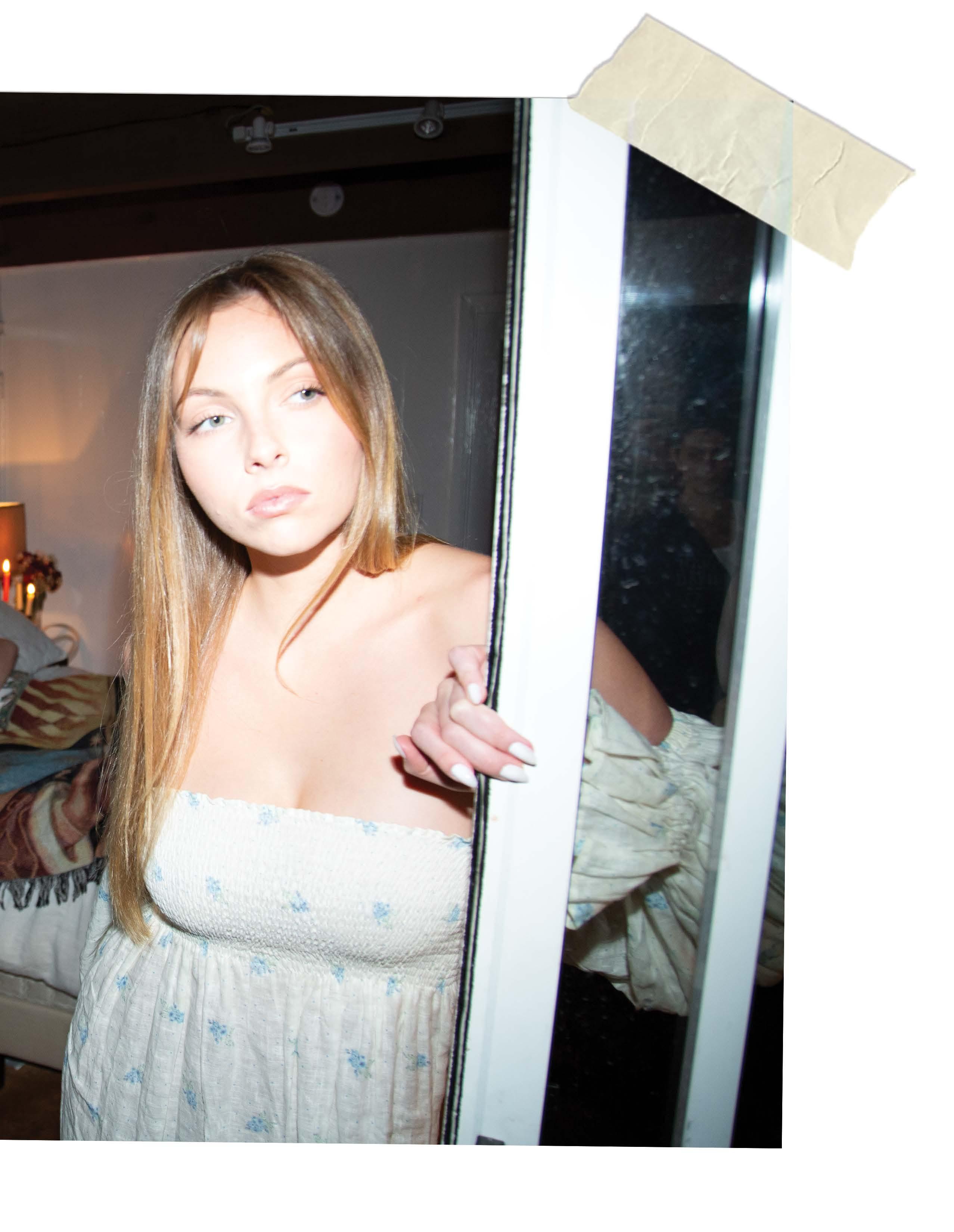

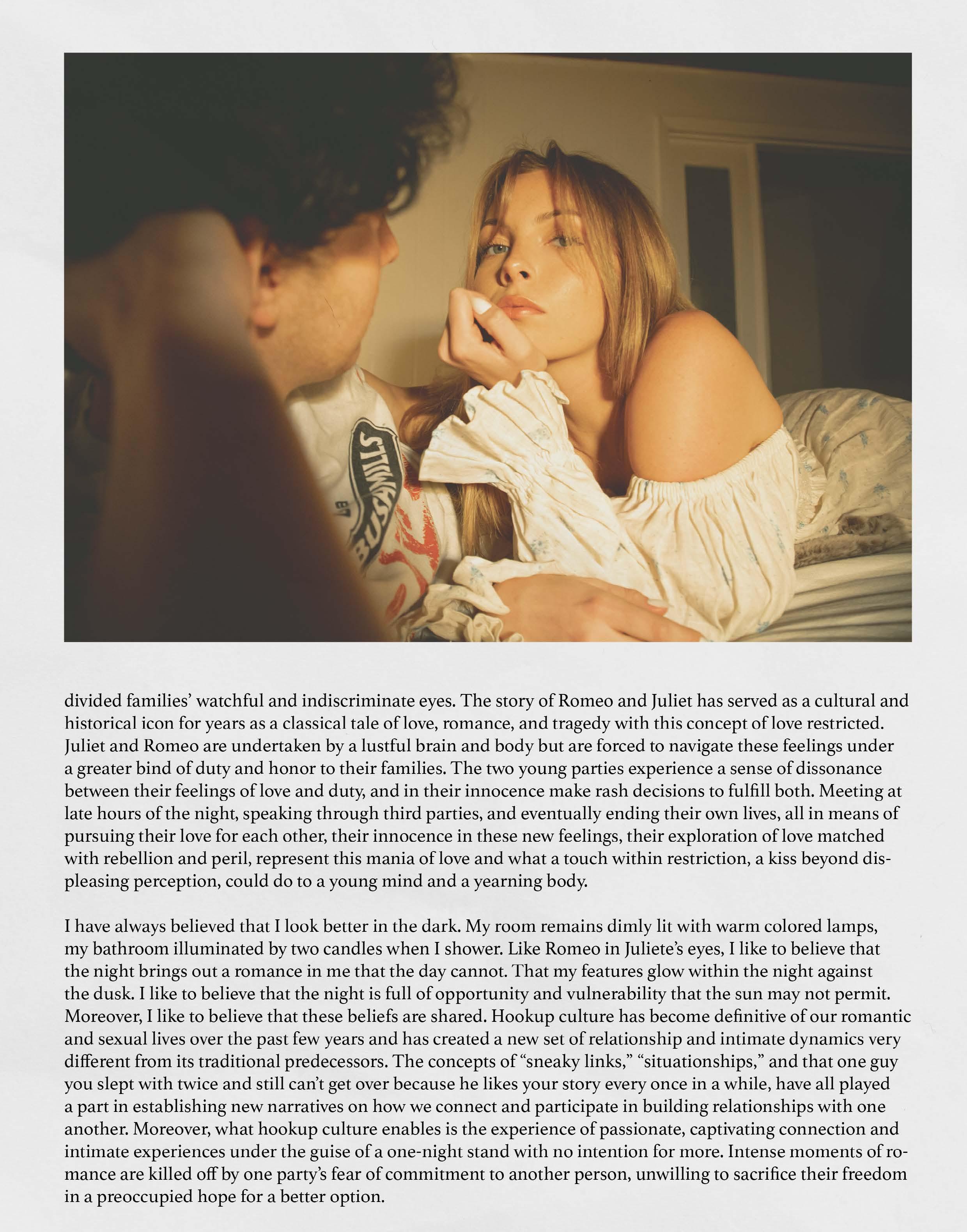


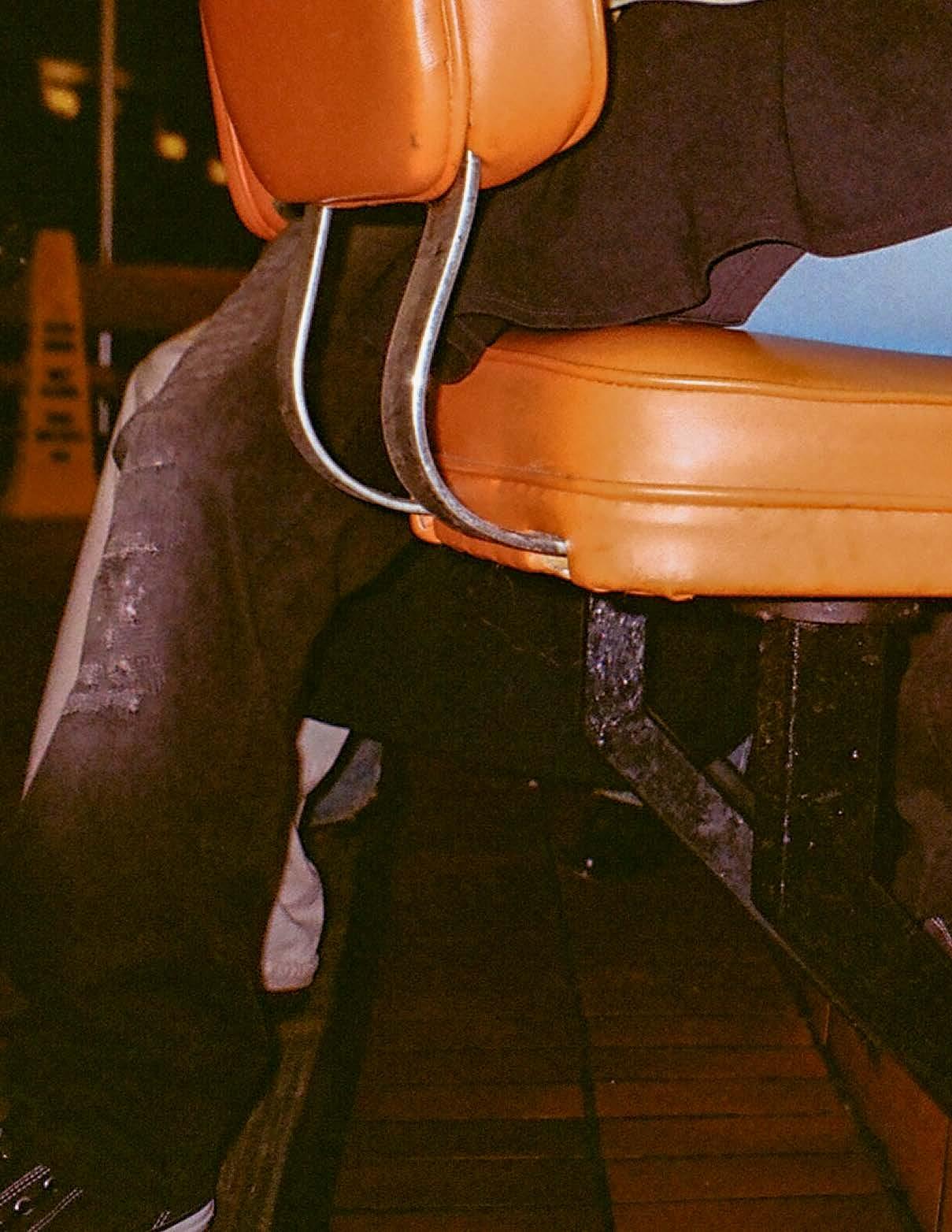
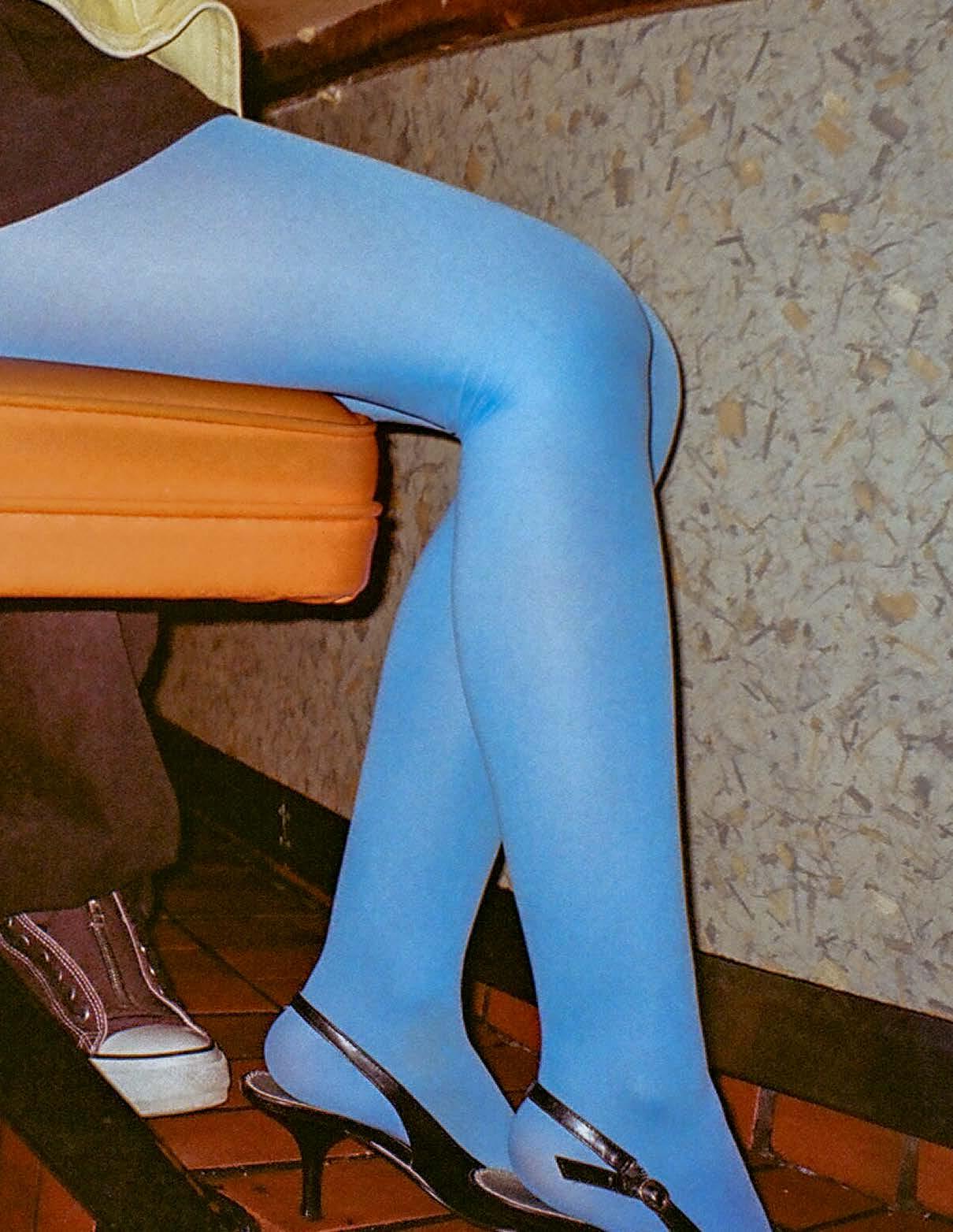

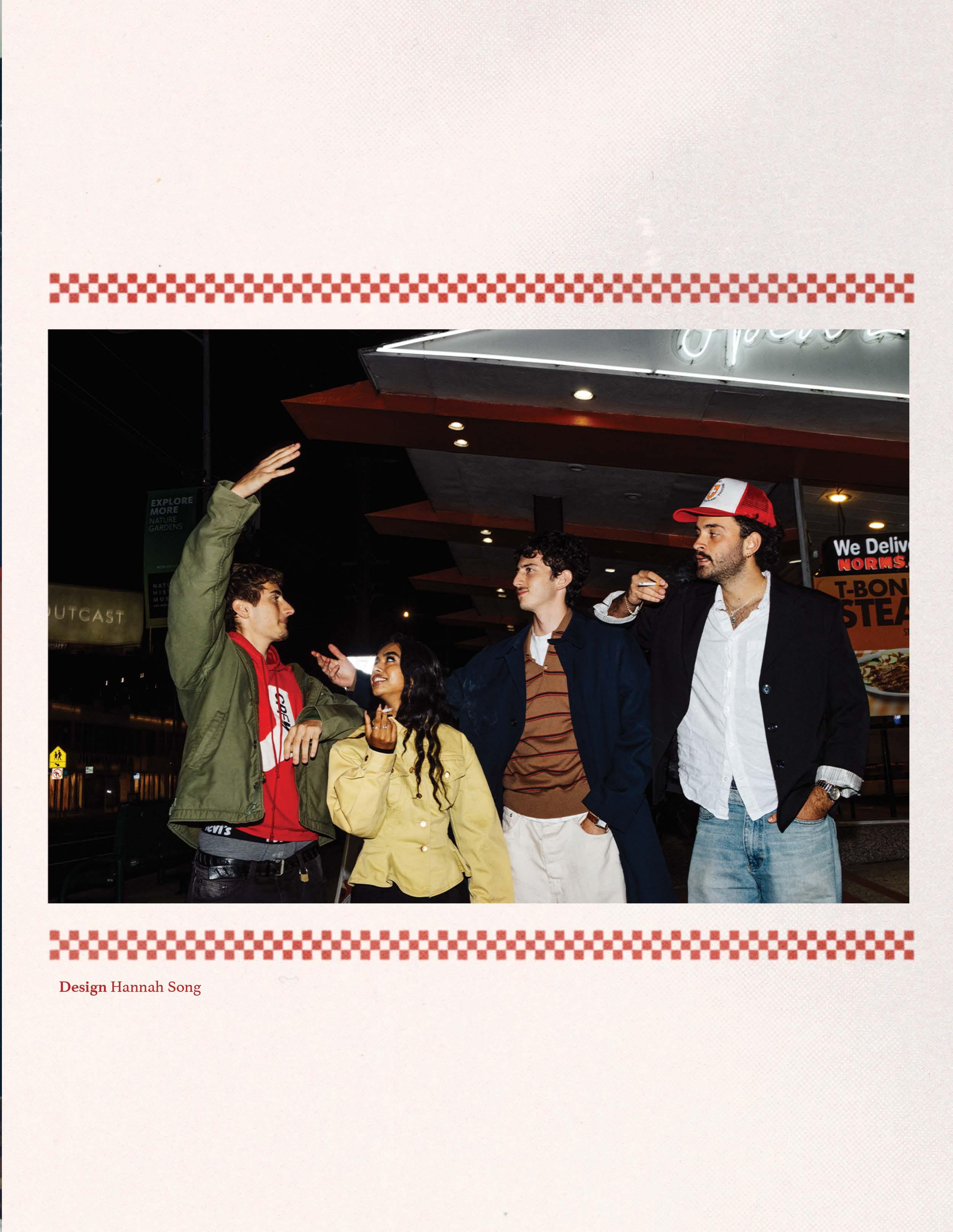


Creative Direction Tasha
Photography Gabe Dresser
Styling
Design Jake Richard
Talent
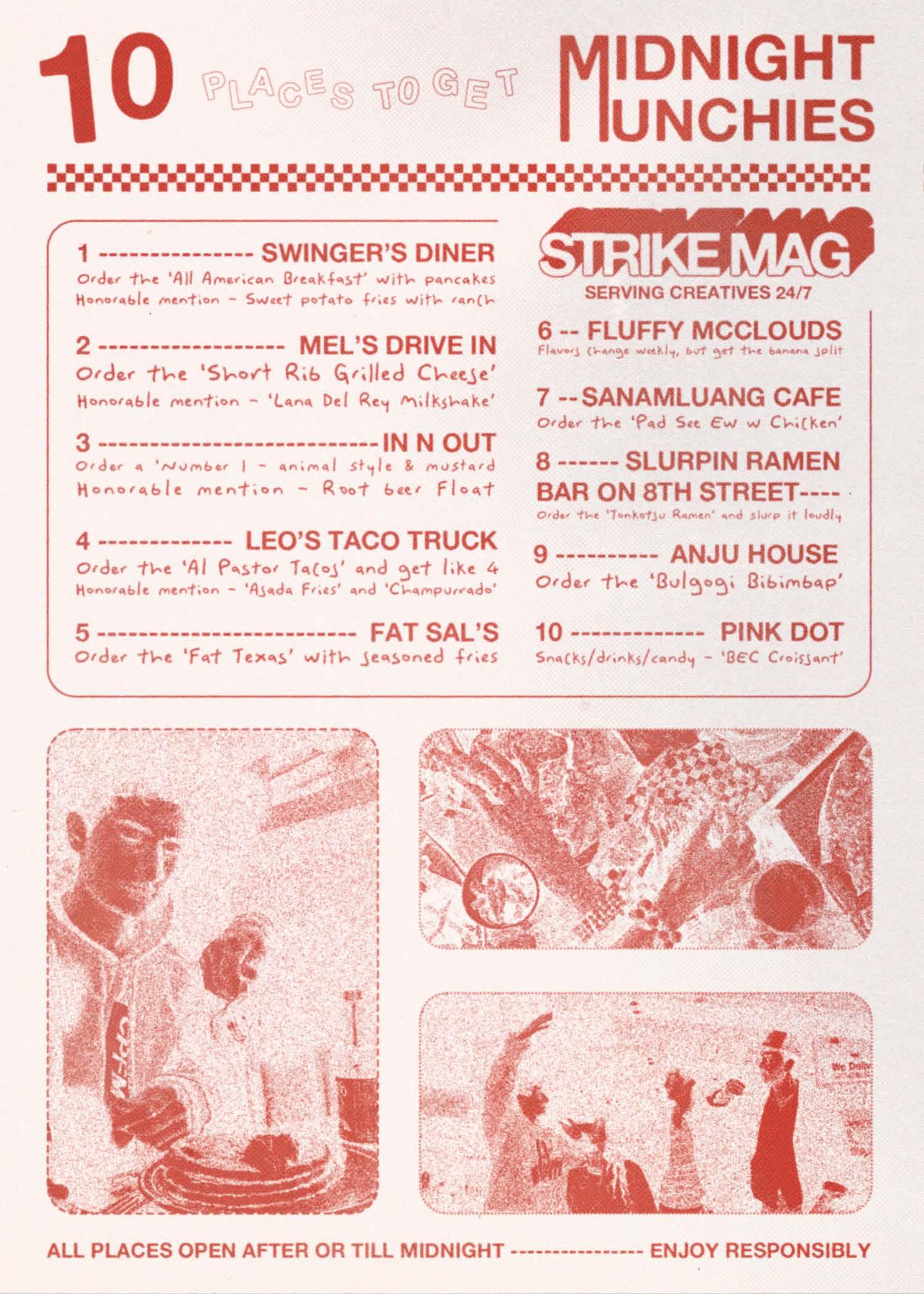
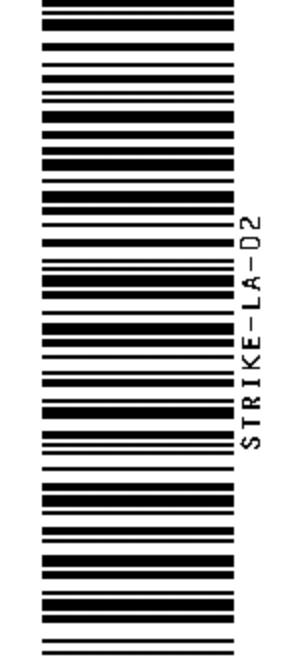


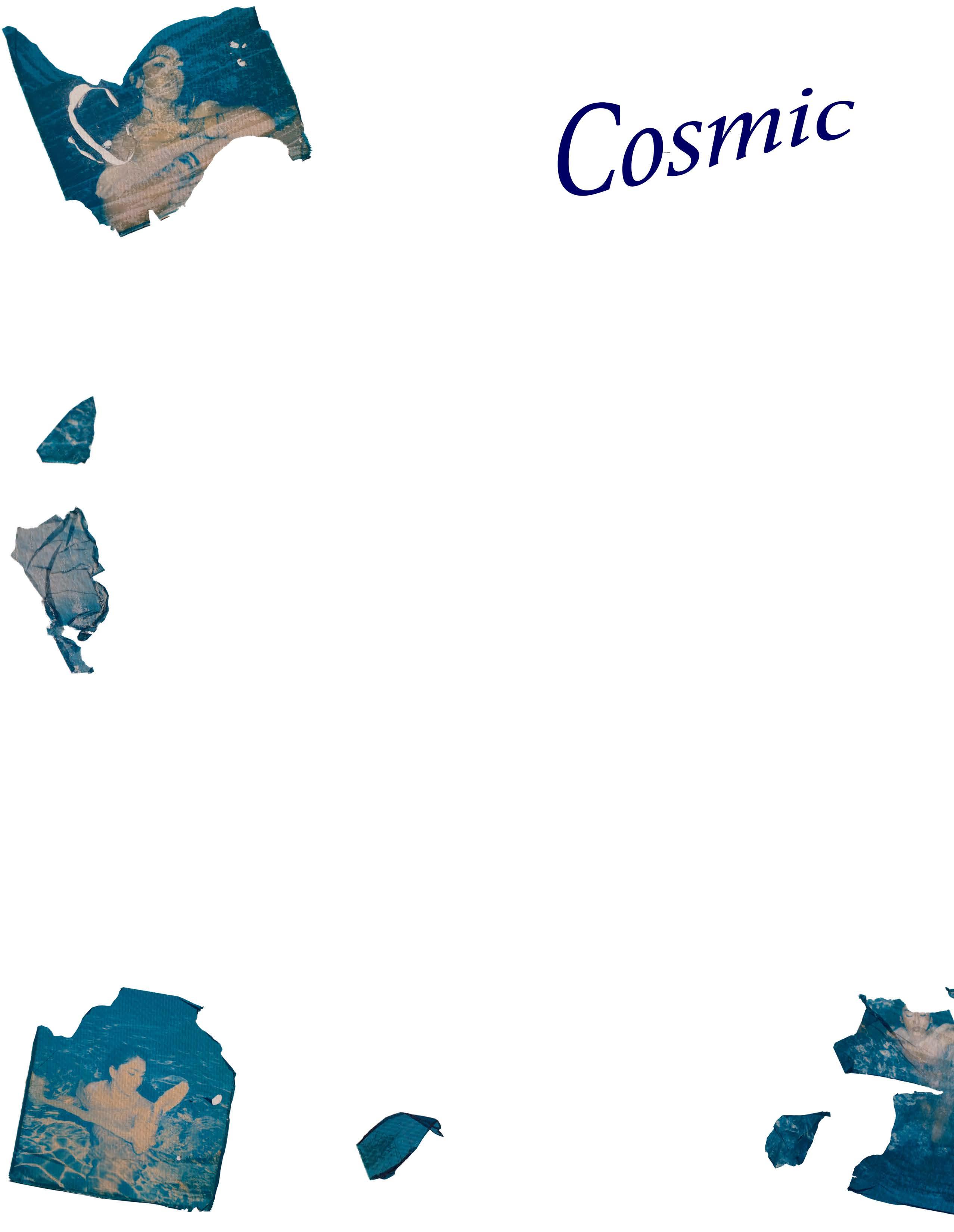
If you’ve been on the internet in the past four years or so, you’ve heard the term “manifesting” before. Even if you haven’t, I guarantee you’ve heard someone tell you “I’ll manifest that for you,” or “I’m manifesting it.” But what exactly does manifesting entail? A witchy dance in the depths of a forest? Painting hearts around a picture of your ex? In 2006, the self-help book and film The Secret (dir. Drew Hariot) caused a resurgence in the ‘New Thought’ laws that manifestation was originally based on. However, as manifesting became popular, so did its misconceptions. Some of Los Angeles’ fellow college-aged manifesters debunk all our preconceived notions of this centering practice.
Manifesting can mean lots of different things. For Grace Dunzo, it means burning incense or sitting with your wishes in a contemplative manner. For Amanda McCabe, it means anything from practices with crystals and candles to a standard meditation. Rohma Malik’s preferred methods are the “...writing down method 3 times, then 6 times, then 9 times,” and the frequency method, where “... you listen to a certain frequency and then you say something a certain amount of times.” The latter method is something Annie Niederman’s best friend swears by. This complex oral history of unique tales of manifesting paints a picture of a spiritual system that many followers tap into in different ways.
The most common way, and seemingly the consensus, is manifesting by speaking as if the wish has already occurred. According to Louise Hay’s You Can Heal Your Life, the particular tenses and language in which you engage in these wishes is crucial. This is known as ‘positive affirmation structure.’ Seema Kayali gives an example: just speak out loud “oh my god, I love my new house!” or “I love my new Valentino bag,” and you might just receive a designer bag on your new front porch. When describing this, Seema’s philosophy strikes me as the root to why many believe so strongly in this practice. She expresses that “I think I subconsciously try to make it happen cause I want it so bad.” Her family, who are invested in the law of attraction, think “it’s like a subconscious way to get yourself to do that thing. Like, putting it out there, but actually you do it. It’s in your power, and the energy comes back to you...”
The law of attraction was a New Thought spiritual belief introduced by William Walker Atkinson in 1907 that focused on how a positive attitude towards your future is the most important principle. Atkinson believed heavily in the importance of vibrations. His theory was that everything that happened to you was created by your thoughts, and therefore your attitude was crucial.

By Maria Murphy Talent Alezeh
Amanda McCabe, a routine manifester, agrees that manifestations’ capabilities are rooted in the confidence they provide. Amanda explains “...when I’m confident something has the potential of working out, then I’m definitely a lot more likely to go for what I want and what I want to achieve. It’s all about the mindset.” If this theory proves to be true, I am even more blown away by the capabilities of our brains. Through our confident mindset and openness, subconscious or otherwise, to explore our inner wishes, we are capable of anything.
Annie Niederman, who manifests from time to time, describes the feeling that occurs when the manifesting ‘doesn’t work,” as she recounts the time she tried to manifest her midterms: “It’s a bummer when it doesn’t happen though. Like ugh...I went through all of that!” According to experts on the practice, proper manifesting involves more than a simple wish. It requires tuning into the natural rhythms of the universe- namely the alignment with the moon. Astrology.com teaches that each zodiac sign has a traditional ‘ruler’ that dictates much about them. To manifest best, you should follow what this ‘ruler’ requires. For example, if you are a Leo, you are ruled by the sun. And “if the sun rules your chart, confidence and self-expression are the keys to your success. You should be bold and lean into your natural talents and abilities.” It seems we do not always use our capabilities to our advantage, and a way to tap into this could be through manifesting with your ‘ruler.’
What shocked me most in my interviews was how open each interviewee was to this “hippie-dippy topic.” Even my most skeptical interviewee, the lovely Mia Rivers, was open to the idea and wasn’t about to disregard its power entirely, conceding that “....there is a power in changing your mindset and fully believing in something...” It’s empowering to be in a city, surrounded by students, where no matter how outrageous an idea may seem, the community is ready to hear you out.
Personally, I’ve manifested with my friends for entertainment. Whether the wish comes true or not, the process itself contains an excitement and anticipation that makes me hopeful. Like Amanda said, the true result of manifesting is your confidence. You can do anything you put your mind to as long as you believe it. And light a couple candles.




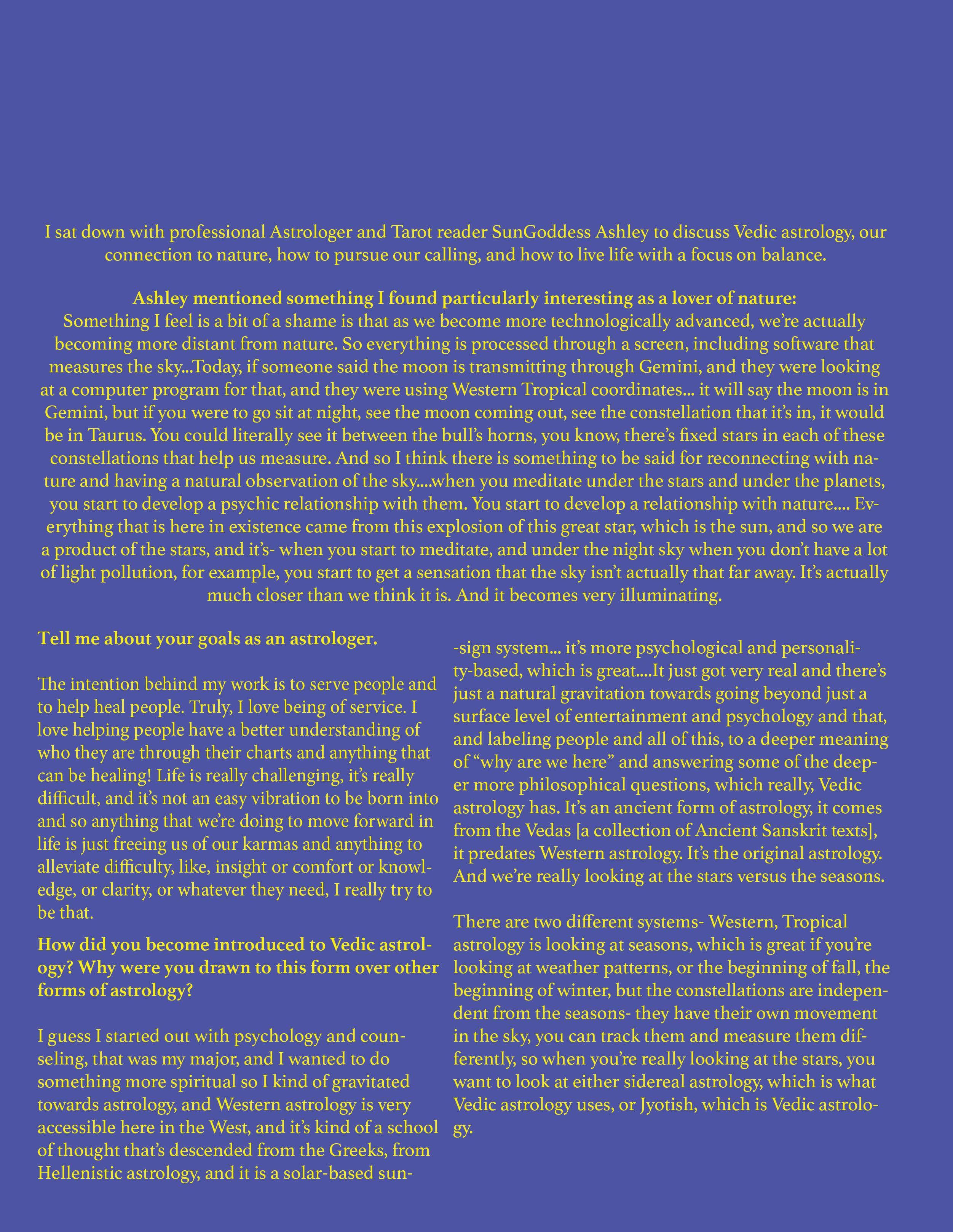

by Maria Murphy

by Grace Seufert

Hollywood isn’t just about fame—it’s a synthetic world. I’ve spent time in Hollywood, navigating clubs and artist parties, walking the Hollywood Walk of Fame. Hollywood deals in image, not real connections. Relationships are built on power exchanges, not mutual respect. People are there to be seen, not to connect.
Deep down, I have a hunch that the constant exposure, the need to maintain a perfect image, is why we see so many turn to drugs. They need to make themselves more synthetic, less human, to survive the pressure of constantly being on display. If you numb yourself enough, the weight of stardom feels a little lighter.
We’ve seen it time and time again—Kurt Cobain, Jimi Hendrix, Mac Miller, even Heath Ledger—artists who couldn’t bear the weight of expectations and turned to substances to

cope. It’s tragic but familiar: the pressure to be perfect in a world that values you only as long as you’re marketable. As Stevie Nicks said in Gold Dust Woman: “Take your silver spoon, dig your grave.” Fame, power, and beauty promise wealth and success—but they can also kill you. The moment you trade your authenticity for those hollow rewards, you’re no longer a person; you’re a product.
Why do Hollywood’s brightest stars fall into addiction, depression, and tragedy? The simple answer is that the cost of fame is too high. It’s not just the public pressure or loneliness— it’s the deeper side of fame: the way it turns people into products, rather than human beings.

In an industry driven by profit, stars are treated as assets, not individuals. Corporations, labels, and studios use their talent to fill pockets, often with little regard for their mental or physical well-being. Take Elvis Presley or Britney Spears—both were pushed to extremes by those who saw them as tools to generate money, with little concern for their struggles. Fame doesn’t just exploit; it commodifies, stripping away humanity in the process.
When we look at figures like Justin Bieber, thrust into superstardom at a young age, or Heath Ledger, whose role in Joker demanded he lose himself, we see the toll fame takes. Drugs become a way to survive—making you less vulnerable to the constant spotlight and brutal expectations of being an “icon.”
In the end, Hollywood offers a trade: you give up pieces of yourself for fame, fortune, and the illusion of fulfillment. But the price is too high. Fame promises everything, yet delivers little. The stars we worship may seem invincible, but they’re just as vulnerable as the rest of us. The pressure to stay perfect can crush even the strongest.
But there’s a reason people chase fame: the highs. The rush of the spotlight, the power, the adoration—it’s intoxicating, like a drug. For a moment, you feel untouchable. But like any high, it fades. Hollywood isn’t just a place of broken dreams; it’s also where some dreams are realized, for a time. The challenge isn’t the price of fame—it’s finding a way to hold on to who you really are when everything else is consumed.


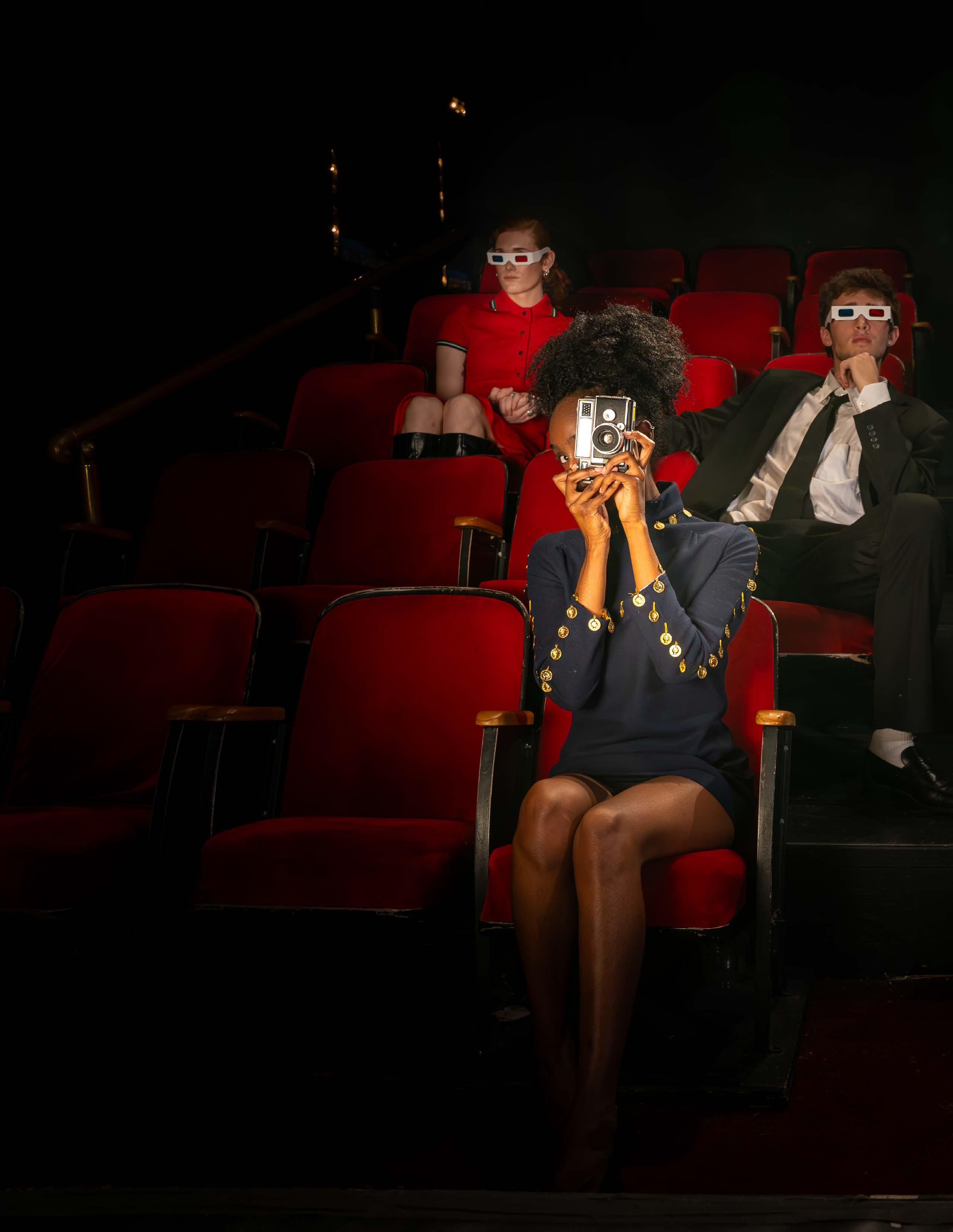
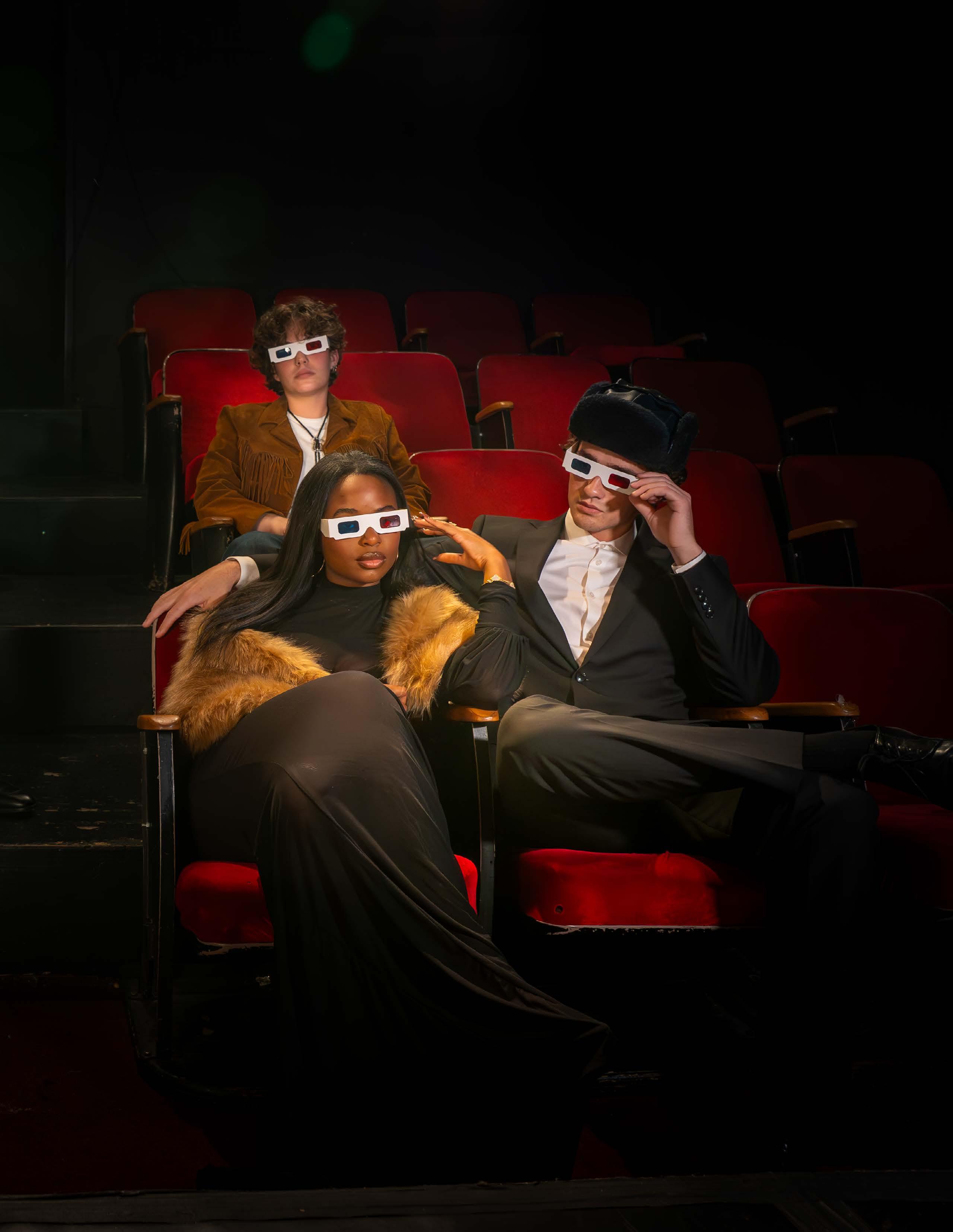
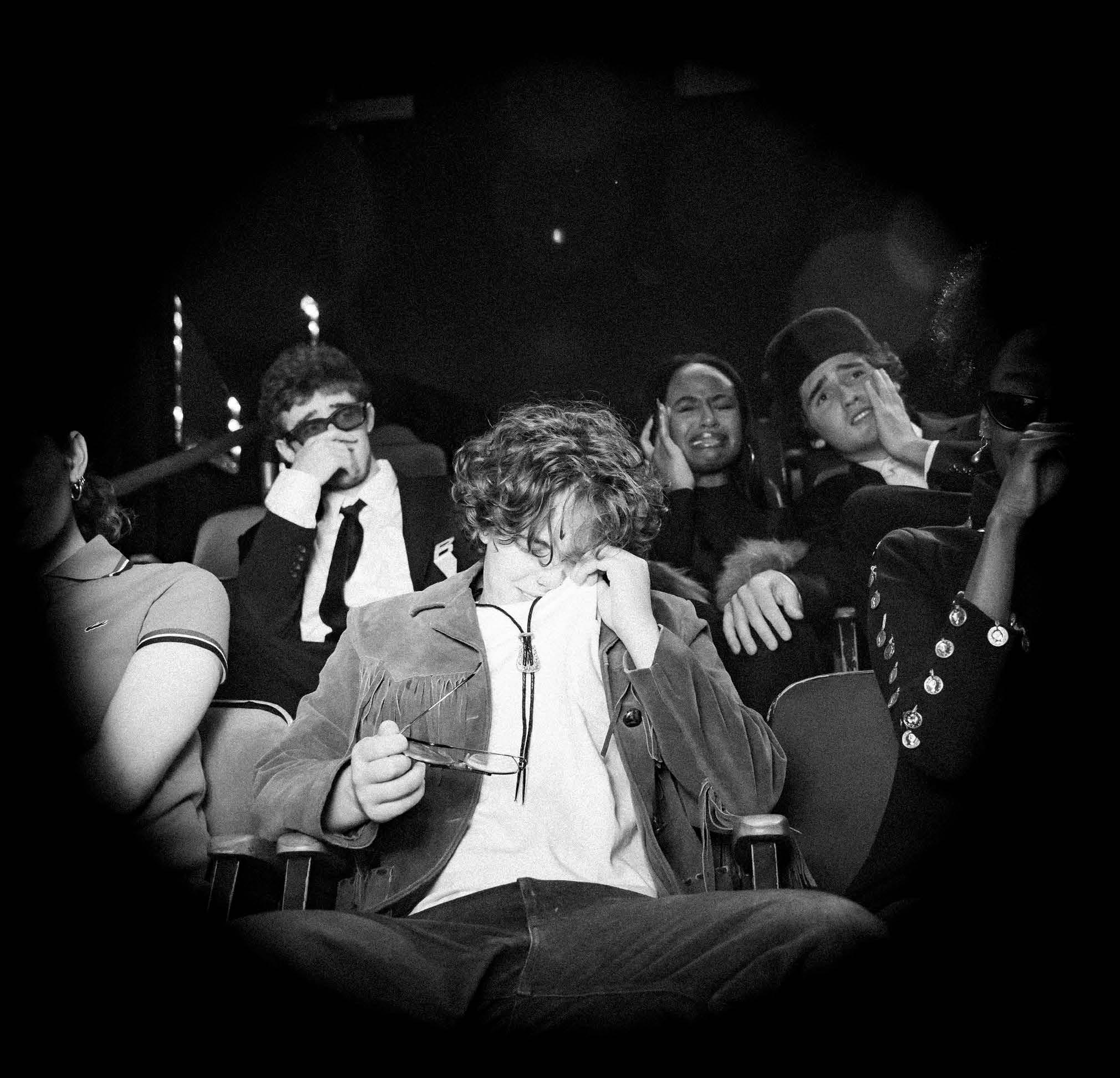


By Mari Lindsey
I had a dream I bled out on my kitchen floor. Someone, an intruder, maybe a friend, came at me with a knife and plunged it into my throat. I laid there on the cold tile unable to move even my eyes. I could only feel the throb of my artery and the warm rush of blood from my neck like wringing your hair after a hot shower. Somehow I wasn’t scared. It was peaceful like an exhale. I woke up terrified, of course, grasping at my neck to make sure it was all just a dream, but after the initial panic, I had a desire for a deeper understanding of what the dream meant. I wasn’t feeling particularly suicidal, so what could it be? Why would my brain want to show me what it’s like to die?
I dreamt of dying after moving to Los Angeles. A scary transition right on the heels of the COVID pandemic. I did a lot of avoiding right after the move. Avoiding feelings of loneliness. Avoiding fears I had of putting myself out there in a new city. Avoiding self care because of how busy I made myself. I didn’t want to think about how many changes were happening in my life simultaneously because I knew I wasn’t keeping up. I left all the pressure for my body to handle on its own. This obviously wasn’t sustainable and at a certain point, my body retaliated against me in my dreams, culminating with my imagined death. My body showed me death, the ultimate form of change, because I had to realize that change will come whether I wanted it to or not.
I just had to accept it. All the other changes in my life suddenly felt small in comparison and I felt ready to face them.
Would I ask for a less violent symbol of change if I could? Sure, but would I have listened? Probably not. Our dreams are a direct link to our subconscious mind. Mine probably tried to give me a thousand more subtle messages before it resorted to killing me in my sleep. Dreams about teeth are widely accepted as the stress dream with around 40% of people experiencing one in their lives. We hold so much anxiety in our mouths. We bite our lips and cheeks when we’re tense, we clench our jaws, some of us even grind our teeth at night. Our dreams when we’re stressed relate back to teeth because while we sleep, our teeth bear the weight of our unease. These dreams can be extremely variable and a different stressed related meaning can be assigned to each type. Your teeth falling out could mean you’re anxious about change similarly to dreaming about losing blood. Swallowing your teeth could mean you are anxious about something you didn’t say that you maybe should have. Chewing on your teeth could be related to fears you have about the passage of time and aging. The list goes on. Our subconscious is trying to bring our attention to our mouths, attention to where our stress manifests in our bodies, so that we can ease it. When we don’t, and the stress spreads from the mouth to the rest of the body, our minds send us more drastic signals.
A less common but more potent sign of stress that manifests in our sleep is sleep paralysis. Paralysis occurs when your mind wakes up but your body stays asleep during the REM cycle, the high activity stage of sleep that dreams inhabit. You can hallucinate all kinds of strange things happening around you while being totally unable to move your body. You get this sense of utter powerlessness that could be reflected in your waking life. In my experience, sleep paralysis dreams have been harder to make sense of. I’ve had some as harmless as a puppy scampering into my room and laying on my chest, and some as terrifying as a pair of scissors cutting me straight down the middle. The only common thread between them being absolute turmoil in my waking life. A perfect storm of sleep deprivation and stress that lead to these trippy waking nightmares.
Thankfully, dreaming isn’t always scary. Sometimes it's fun and adventurous. You may have heard of these intrepid dream explorers called lucid dreamers. During a lucid dream, you have full awareness that you are dreaming. Some lucid dreamers take this rare power to the next level and can control the events of their dreams, giving themselves super powers or rehearsing real life scenarios that they may not get to experience in their waking lives. When I wake up from a lucid dream, I’m often still mentally tired because of the sheer number of things that can happen and the amount of decision making involved. Lucid dreams allow us to explore our deepest desires, freedoms, and fears in a much less malicious environment. A place of your own design.
I began to pay much closer attention to my dreams and even started keeping a dream journal by writing down the events of my dreams as soon as I woke up. If a dream is a dare from your subconscious, my journal became a catalog of all the dares I’d received. Not all of these dares serve the same function and it can be difficult to discover what they mean for you. Writing down the events of a dream is the first step to figuring them out, understanding the nuance, and ultimately accepting the challenge. A dream of being lost in the woods? A dare to seek guidance in waking life. A dream of falling? A dare to relinquish control. A dream of death? A dare to accept change. A dream about an ex lover? A dare to– well, let’s keep avoiding that one for now.
Dream journaling not only helps me to remember what I dream about more clearly but also to interpret them. I often compare my dream journal with my normal diary entries and it's uncanny how many times I’ve matched a restless night of sleep to something that was bothering me in my waking life. Writing things down offloads the pressure from our minds. It turns the abstract and complex into something concrete. Something you can hold in your hands. Your brain will thank you for taking off some of the pressure and will, hopefully, stop trying to kill you.

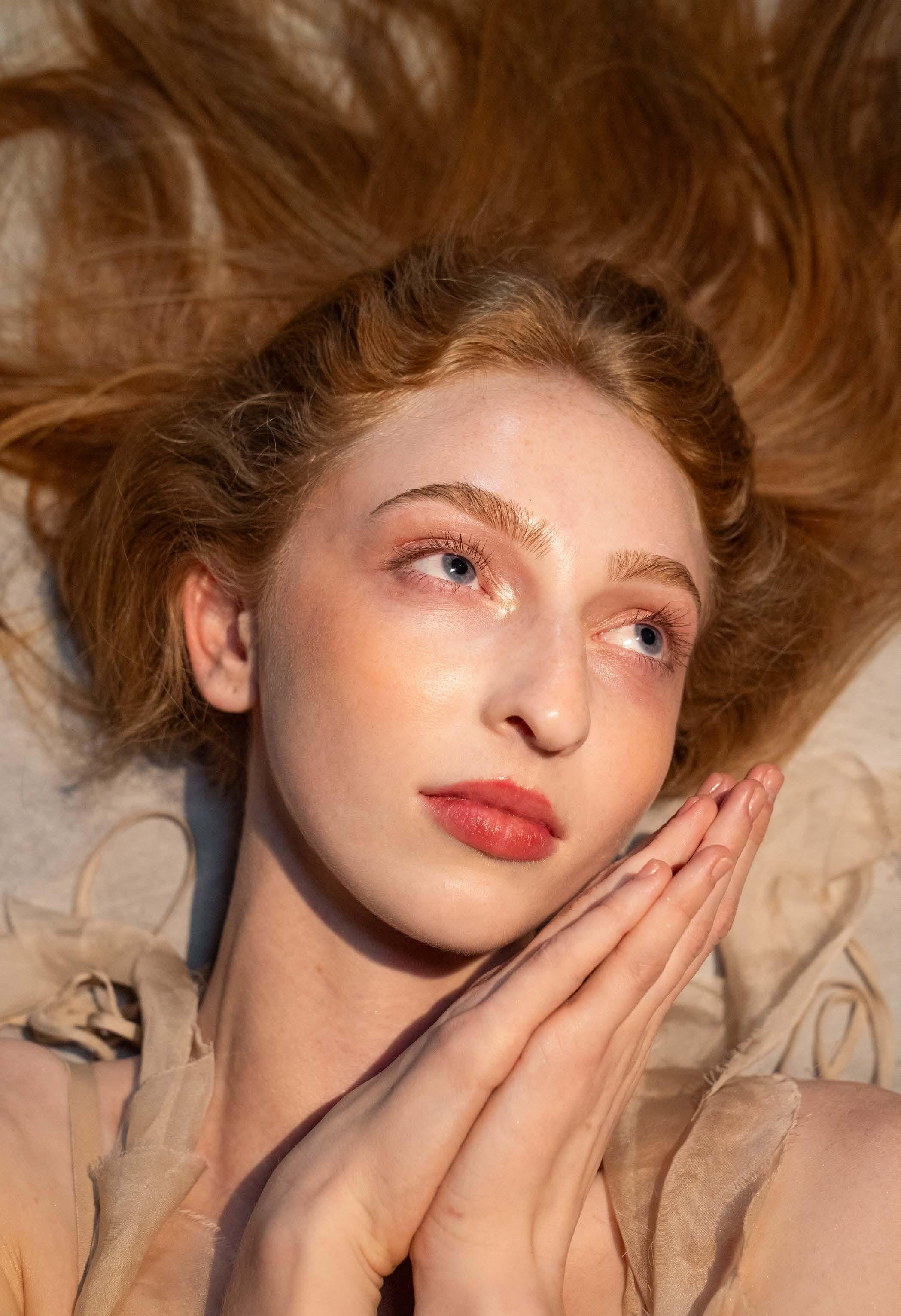

how come I have to wake up and want to be somebody?
want to want something want to mean something sharks are older than the north star did they even notice when it blossomed from deep space? an apple bobbing between galaxies how come the only time sharks look up is when they feed? don’t they worry about the relentless passage of time when they leap from the water and see fire move across the sky? how come I have to worry and want and ask how come? how come I can’t be small enough to worship a fallen tree or vast enough to ignore what gnaws at my skin? how come I’m made in between hunger and knowing and grass and peeling storefronts? how come I don’t wake up and burn like time, like a star? Instead, I burn like a blister clung to Earth’s long naked back how come when I collapse they don’t call it something brave like Supernova then allow my echo to smolder and wane and remember how warm I was?
- Mari Lindsey
She cried because the stars were so bright And she had learned to love darkness, Places where she could mask guilt and embarrassment
With blankets of black isolation. She let the moon in to say its condolences, Grieve alongside her as she wrote down the things she’d never say And weep about the places she’d never go.
It felt like the stars stayed out longer that night, Grasping on so tightly to the dreams and secrets that filled the air.
Watching down on lovers who shared drunk kisses between alleyways, And juveniles who used nightfall to seek the forbidden.
He was no longer there.
Draining the light out of her deep blue eyes, Replacing her love with doubt, And her will with obligation.
His presence still lingered, Like the taste of his morning cigarettes on her tongue,
Or the wine stains and coffee rings that still marked her white tiled counters. What remained was a ghost, A mere chill that trickled down her spine as she reached for the cream, Remembering the fight in the kitchen, Or a whisper of the lies he would feed her as she laid her dark hair on her pillow.
It was after his lips would depart from hers that the fog would clear.
Leaving her beside him in bed, wrapped in his arms, Feeling empty and cold, With the bittersweet taste of tobacco and him sticking to her gums.
The next day she would go to the beach, Trace her name in the white sand, Stretch out along a towel worn down by memories and old friends,
And reawaken to the waters cold welcome as she gasped looking up at the sky.
The water made her feel what he couldn’t, Free.
She went to bed that night looking out at the sky again, Taking it all in, The way the stars flickered from her bedroom window, Igniting little fires, Begging to be seen.
And for the first time in a long time, She didn’t feel the weight of tomorrow lying alongside her in bed, Only an elation to feel the warmth of tomorrow, She felt lighter, And walking was no longer a burden, Because his back was no longer bound to hers.
The end of him
Marked the start of her.
She was finally able to feel at home
In a world where he no longer laid at its center. She realized he wasn’t the sun, Because the sun was beautiful and made her feel seen,
As did the moon and stars. And they all called home
The Sky.
by Tasha Karam


Table of Contents & Staff List Design Hannah Song
EIC and CD Creative Direction Ella Lynch Photography
Georgia Dent Beauty Ghena Chungai
'The Sun' Intro Spread Design Carly Giotto
'Why I Stay' Photography Alex Raji Design Tasha Karam
Talent Julia Kramberg
'Beyond the Hussle' Photography Ella Lynch Design
Tasha Karam & Ella Lynch
'What The Light Leaves Behind' Design Ella Lynch
'The Last Sunset' Design Ella Lynch
'The Moon' Intro Spread Design Carly Giotto
'Don't Confuse Me With Who I Am' Design Tasha Karam & Ella Lynch
'Wisdom of the Moon and Body' Design Tasha Karam & Ella Lynch
'The Song of the Gambles Quail' Design Estella Jones
'Meet Me Past Midnight' Creative Direction Tasha Karam, Ella Lynch, & Hannah Tate Design Tasha Karam
'Midnight Munchies' Creative Direction Tasha Karam
Design Tasha Karam, Ella Lynch, Jake Richard, & Hannah Song
'Cosmic Confidence' Photography & Design Ella Lynch
Beauty Ghena Chungai
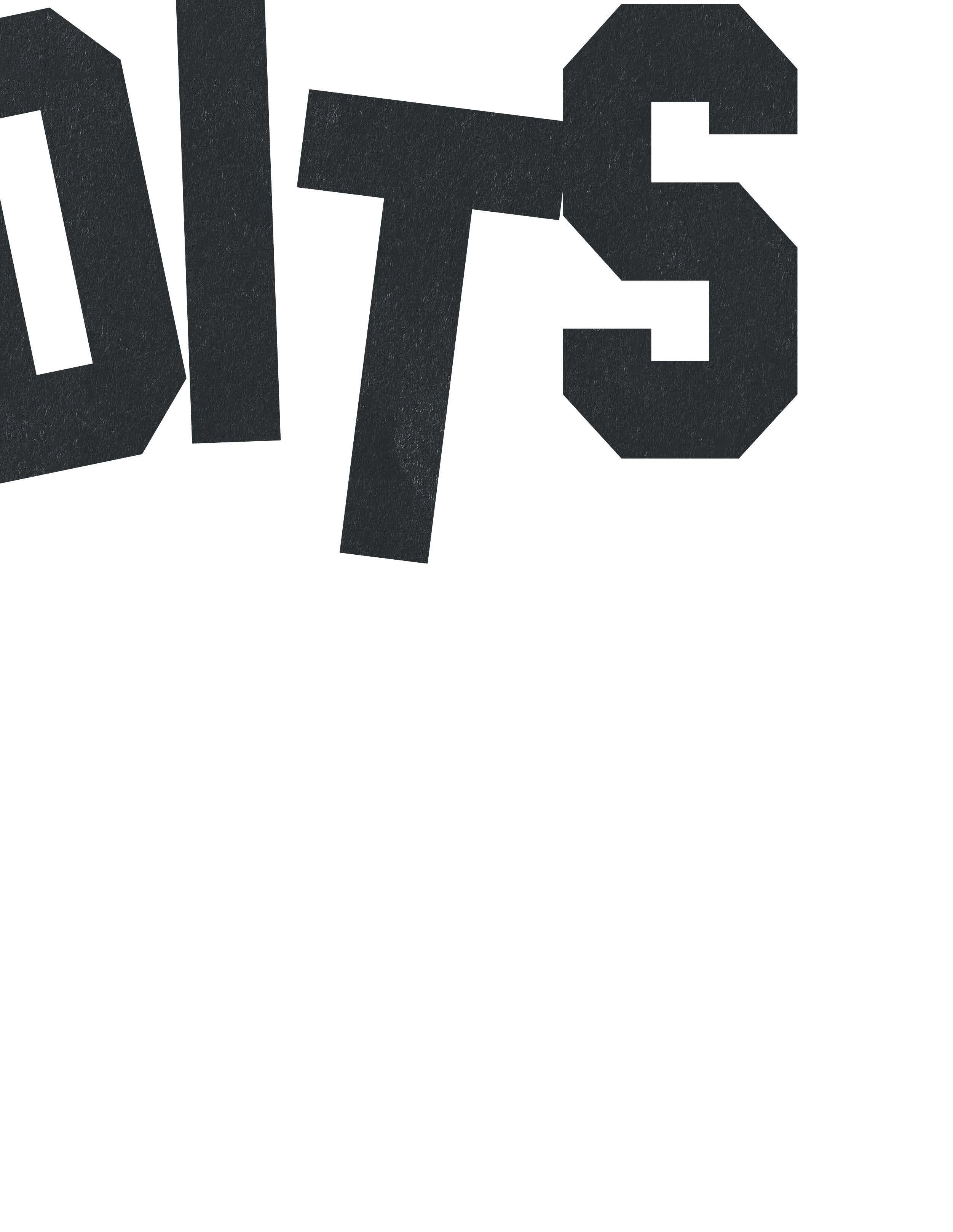
'The Stars' Intro Spread Design Carly Giotto
'Fleeing' Design by Estella Jones
'A Vibrant Talk with a Vedic Astrologer' Design Tasha Karam & Ella Lynch
'Fated: The Crushing Reality of Hollywood Fame' Design Ella Lynch
'Dreams: Embassaries of the Subconcious Mind'
Styling & Beauty Hannah Tate & Grace Rondoni
Design Tasha Karam & Ella Lynch
'How Come I Wake Up and Want To Be Somebody'
Design Tasha Karam & Ella Lynch
Design Tasha Karam & Ella Lynch
Credits Design Ella Lynch
Cover Creative Direction, Styling, & Photography Ella
Lynch Talent Sami Ferra

